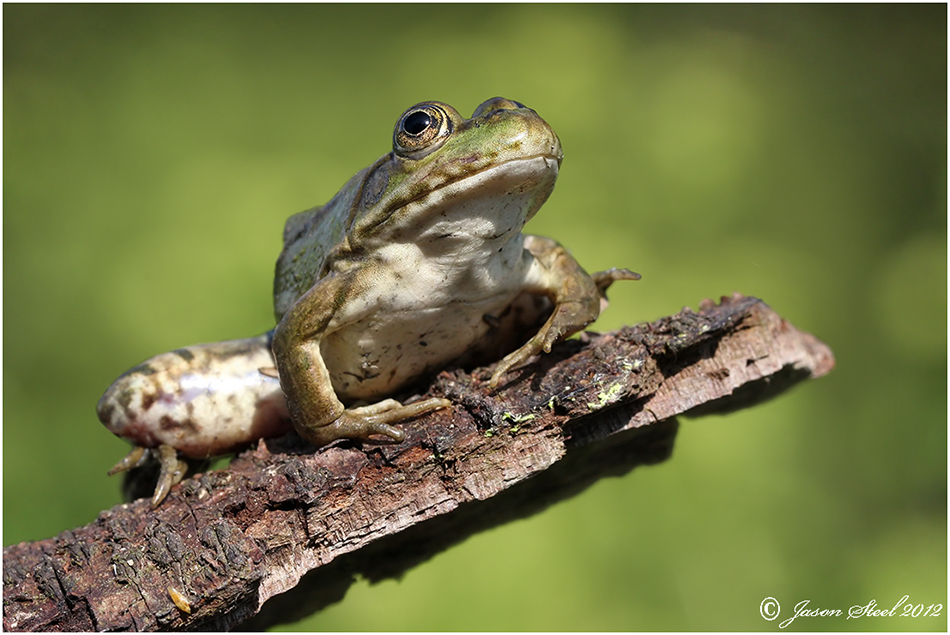
Marsh Frog (aka Lake Frog / Laughing Frog) (Pelophylax (formerly Rana) ridibunda)
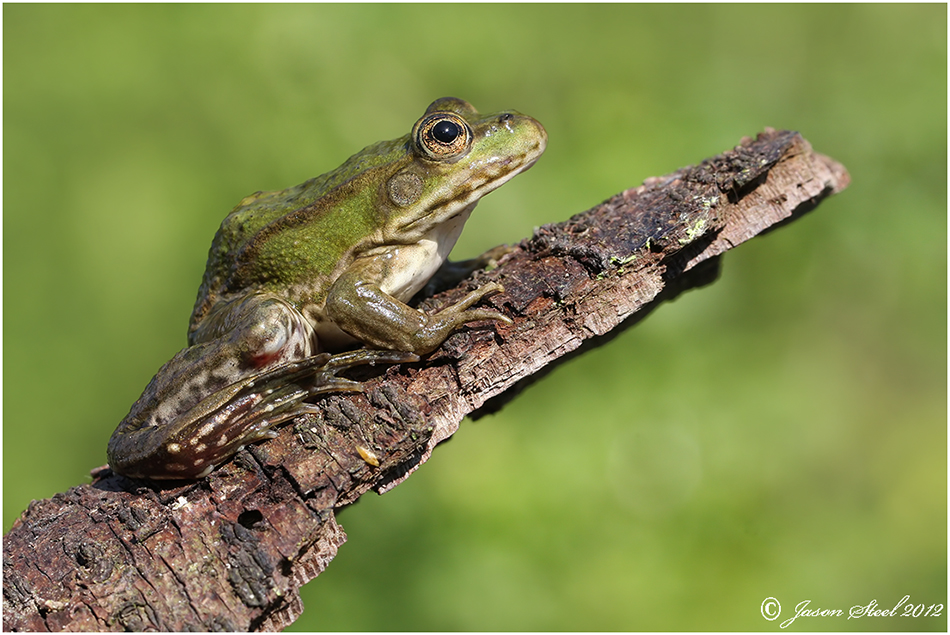
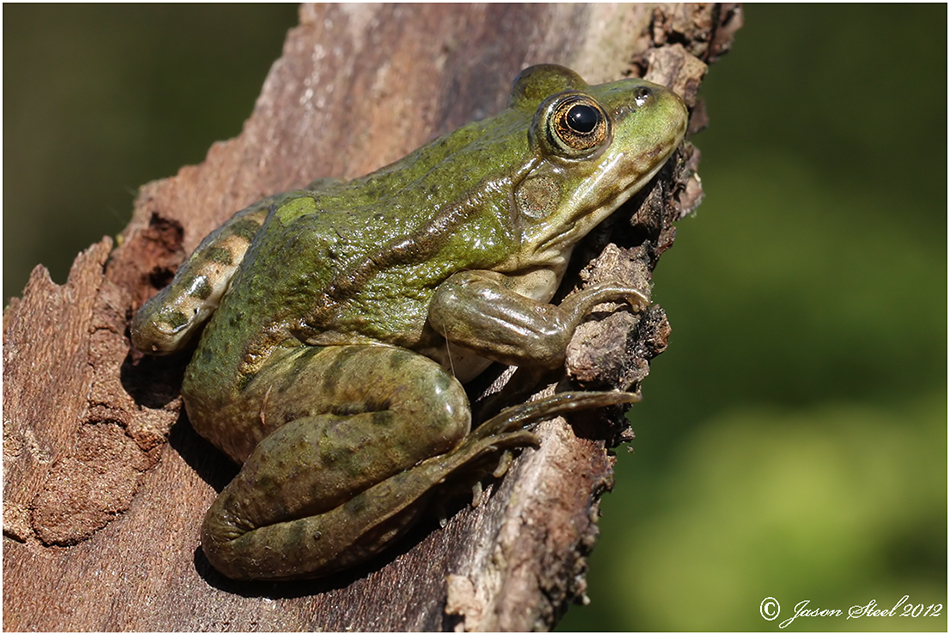
Unlike our Common Frogs the frog spawn of the Marsh Frog is not laid at the top of the water. It is hidden deep in the water amongst dense vegetation where is is often difficult or impossible to spot. Marsh Frogs are the only water frog in the UK that can eat underwater. They are opportunistic feeders and will eat anything small enough to swallow that comes within range. Their hunting response is usually triggered by movement, which can sometimes result in cannibalism, when the movement of a tadpole, or smaller frog, close to the adult frog causes them to pounce. One example of such cannibalism was recorded at Oare Marshes in Kent by Donna Joyce in 2021, when a large Marsh Frog was photographed eating a smaller Marsh Frog in water - LINK Another example was photographed at Tophill Low Nature Reserve in September 2021 - LINK
The Marsh Frog tadpoles are considerably lager than those of the Common Frog and regularly reach lengths of around 80mm. Due to their size it's not unusual to see Grass Snakes feasting on Marsh Frog tadpoles.
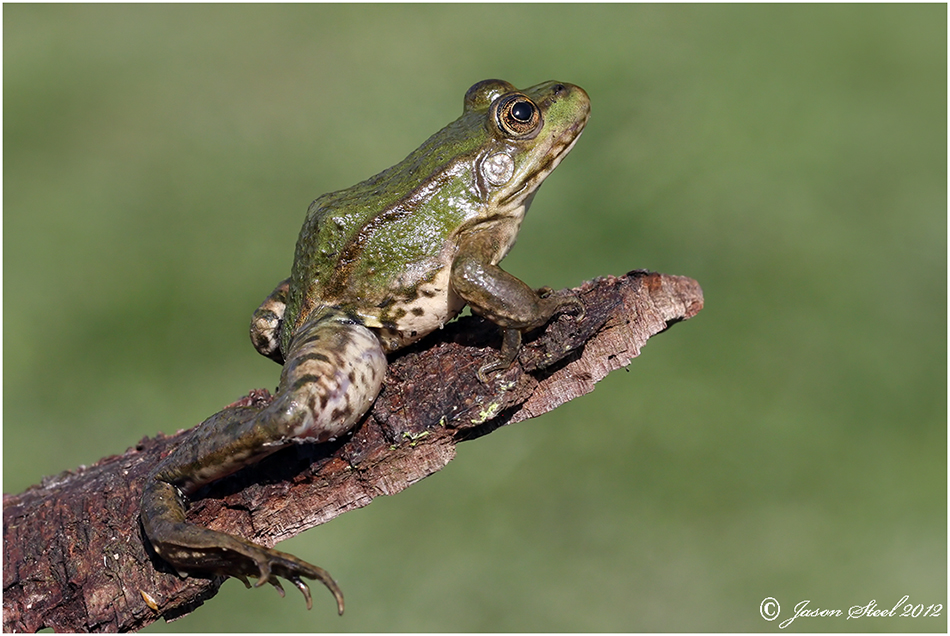
The Marsh Frog can be distinguished from our native Common Frog by several key points. The Marsh Frog is larger and has much longer hind legs. It has close-set eyes. It lacks the dark 'eye mask' and usually the often present dark vertebral stripe of the Common Frog. It can have warty granular skin with dark blotches. It often has prominent grey vocal sacks on the side of its mouth and a more pointed head shape.
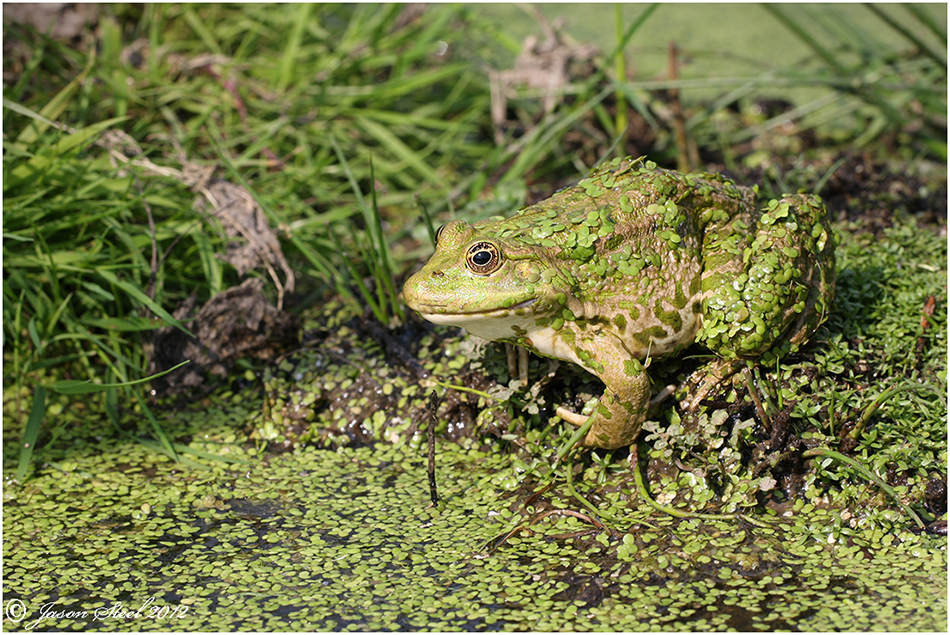
Covered in pond algae and blanket weed this Marsh Frog is well camouflaged against its surroundings and is ready to hop into the water at the first sign of trouble.
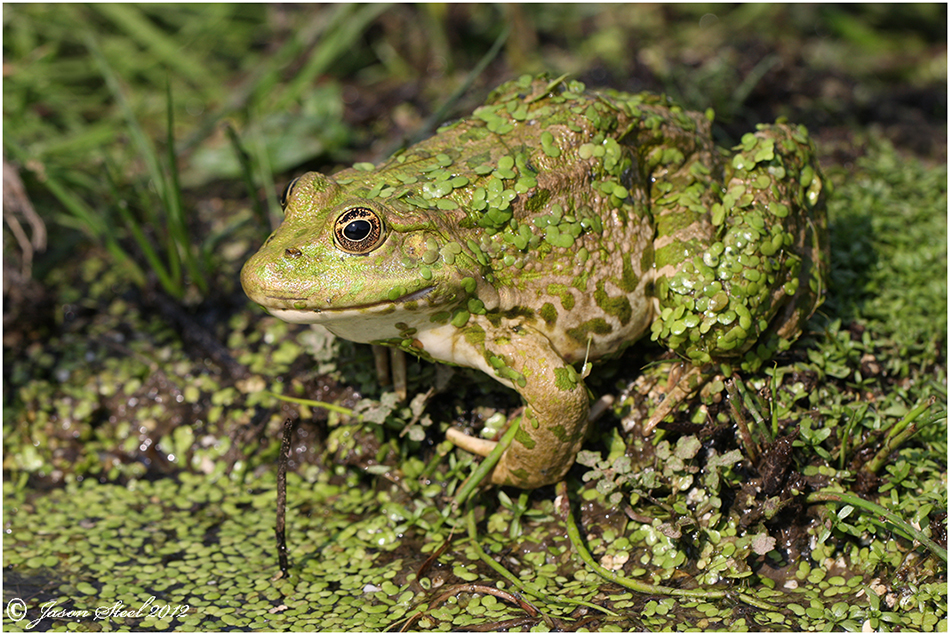
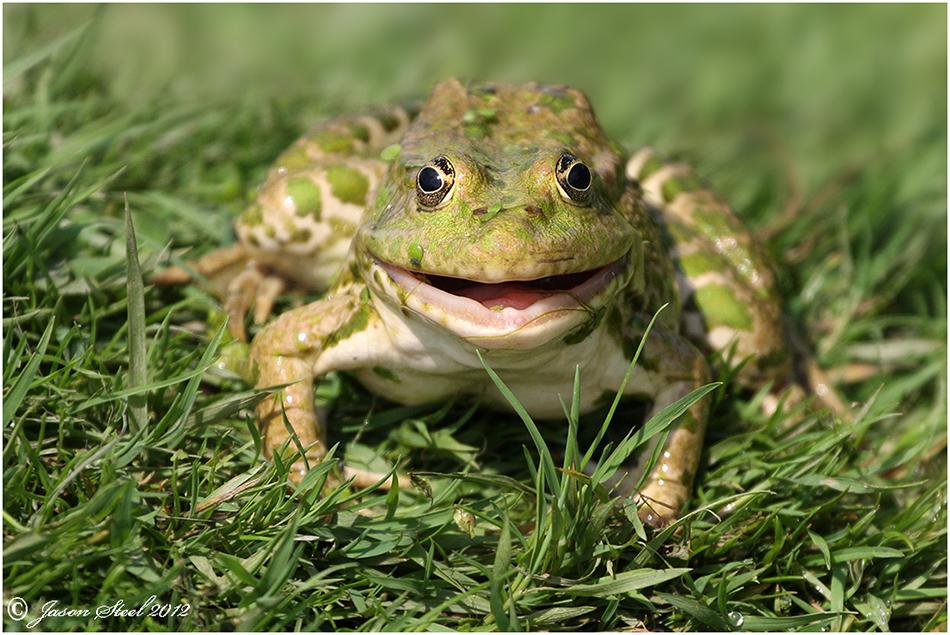
The "Laughing Frog" gets its name from the distinctive and characteristic croaking sound it makes that resembles a laughing sound. This Marsh Frog pictured above isn't actually laughing though. Reptiles and amphibians may open their mouths on occasion when basking to help regulate their body temperature.
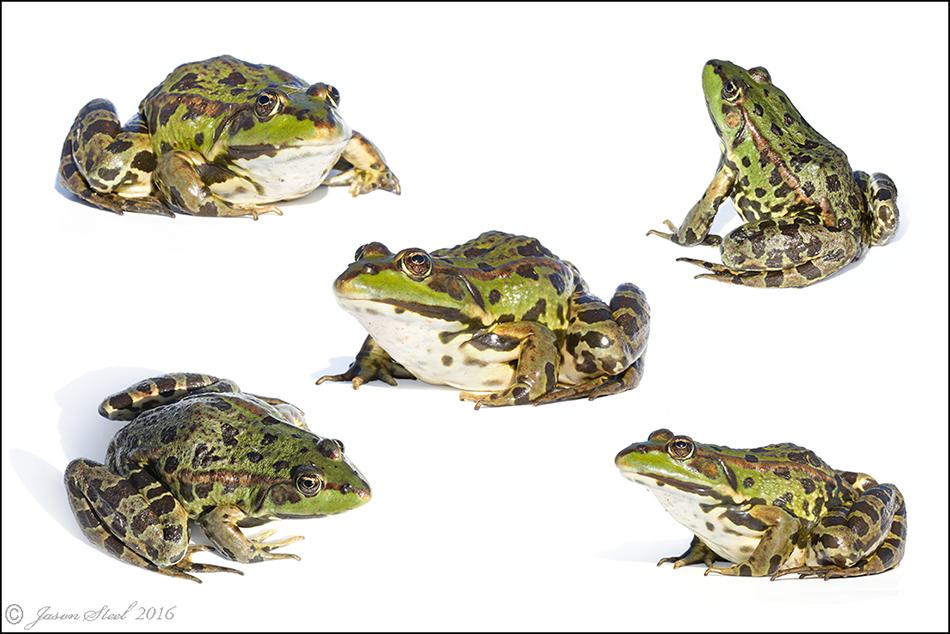
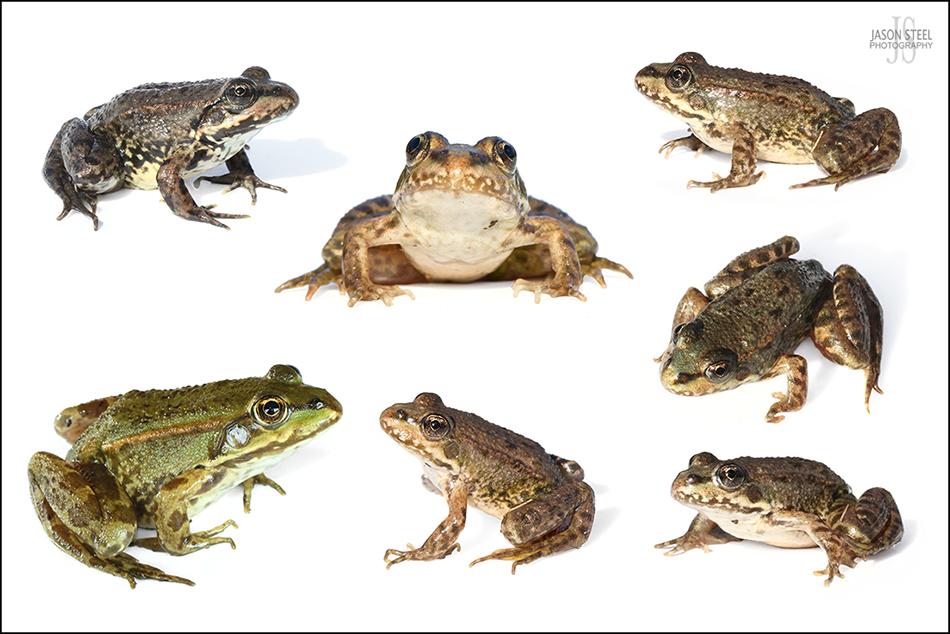
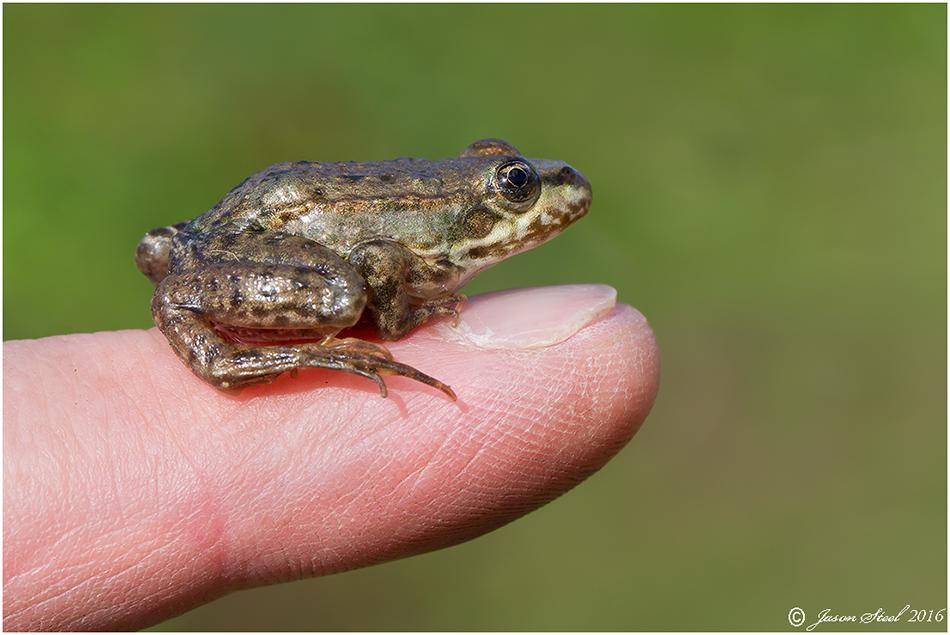
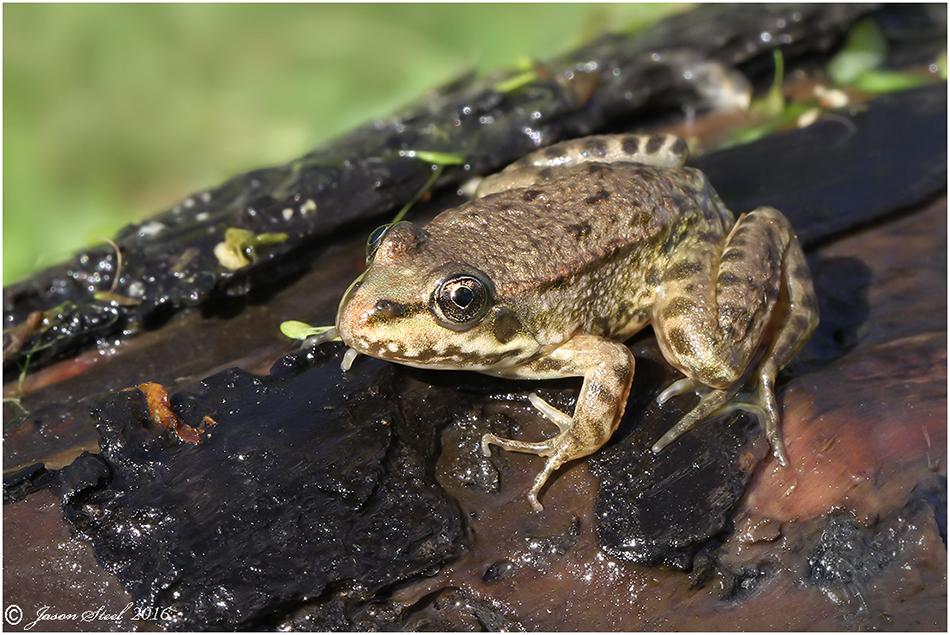
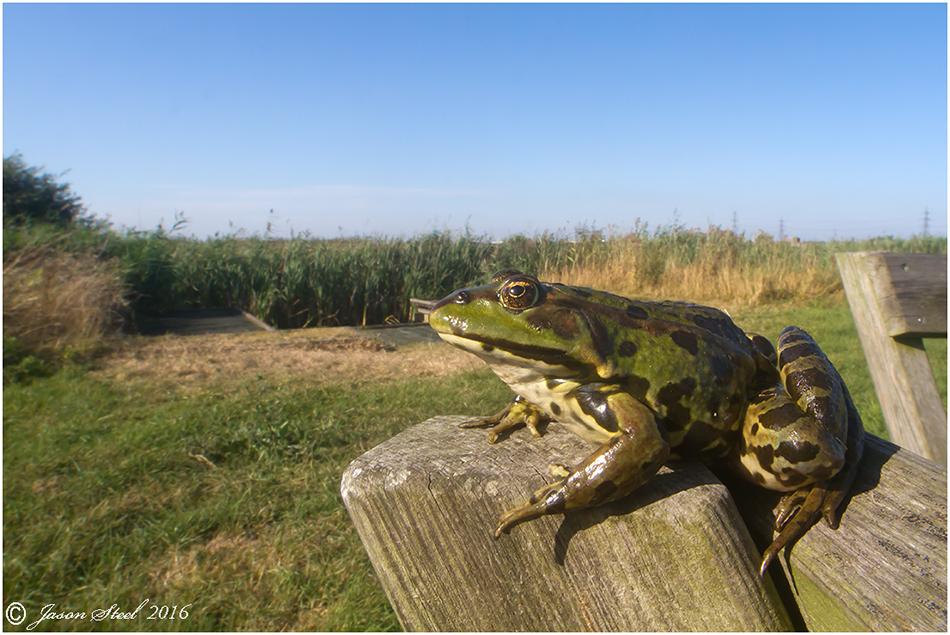
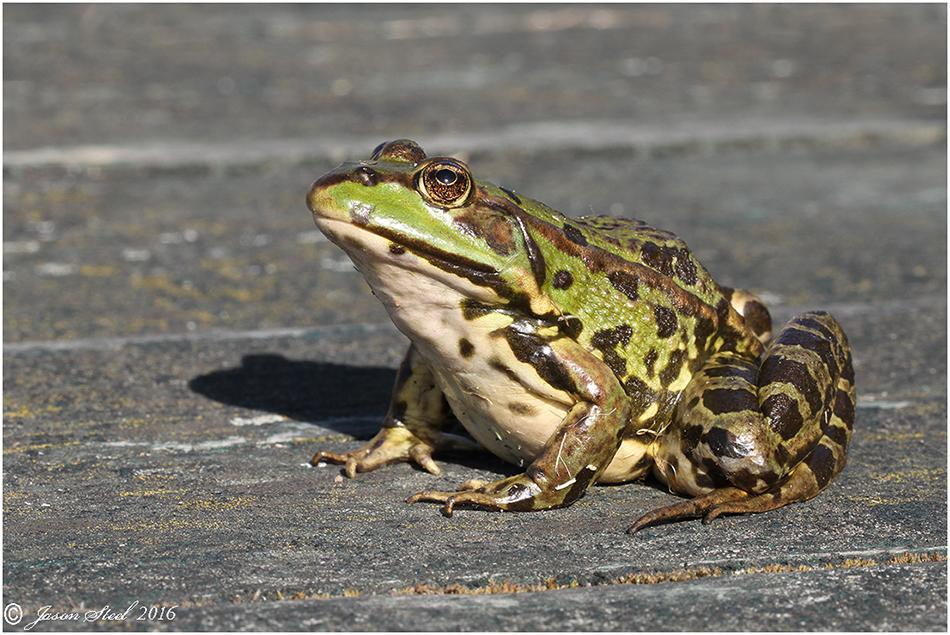
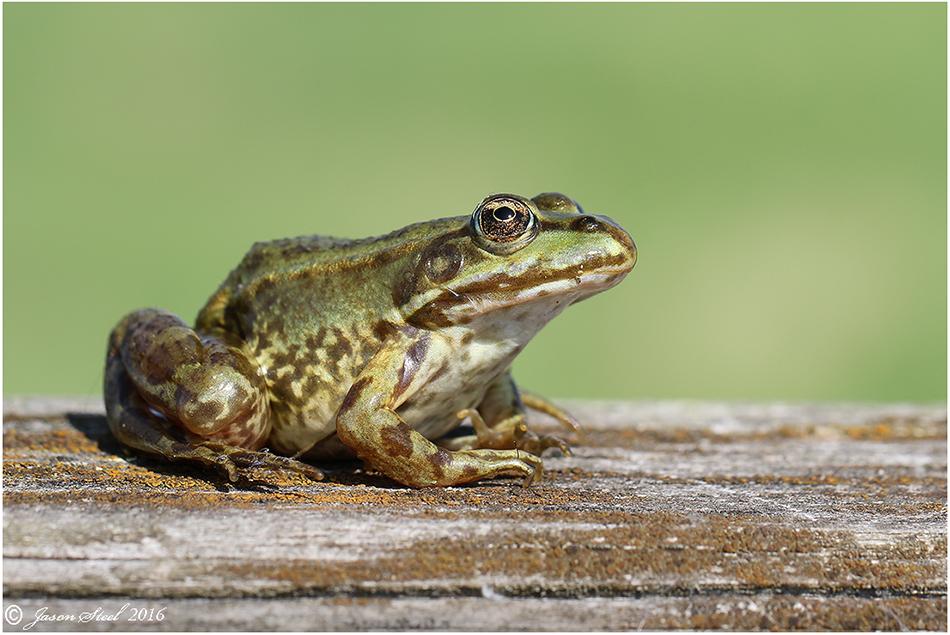
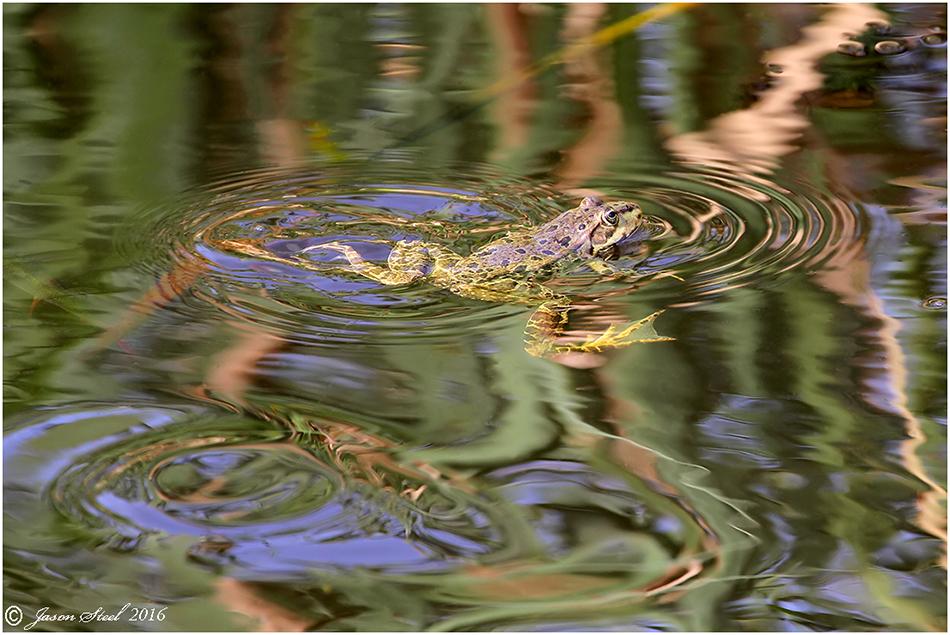
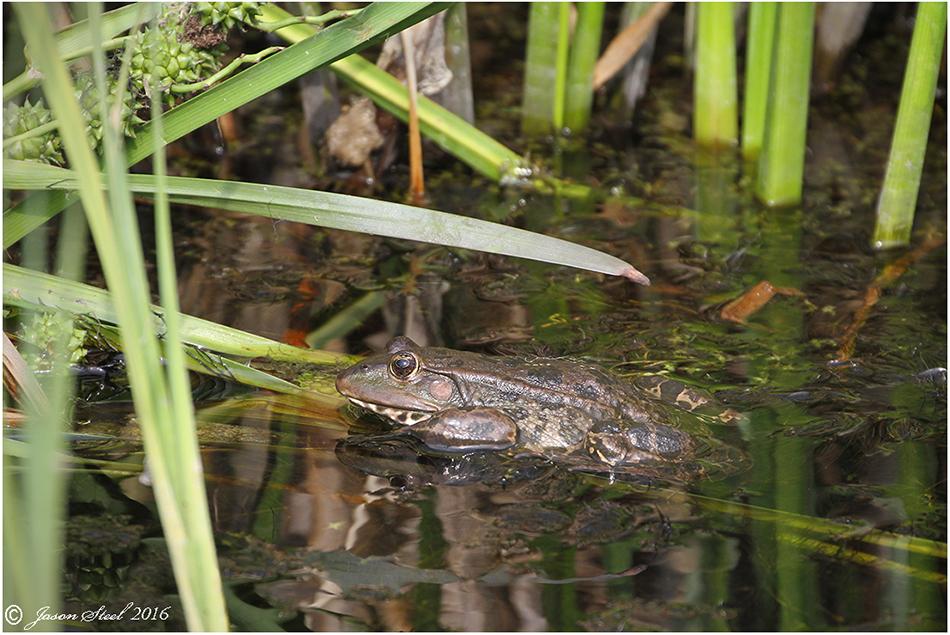
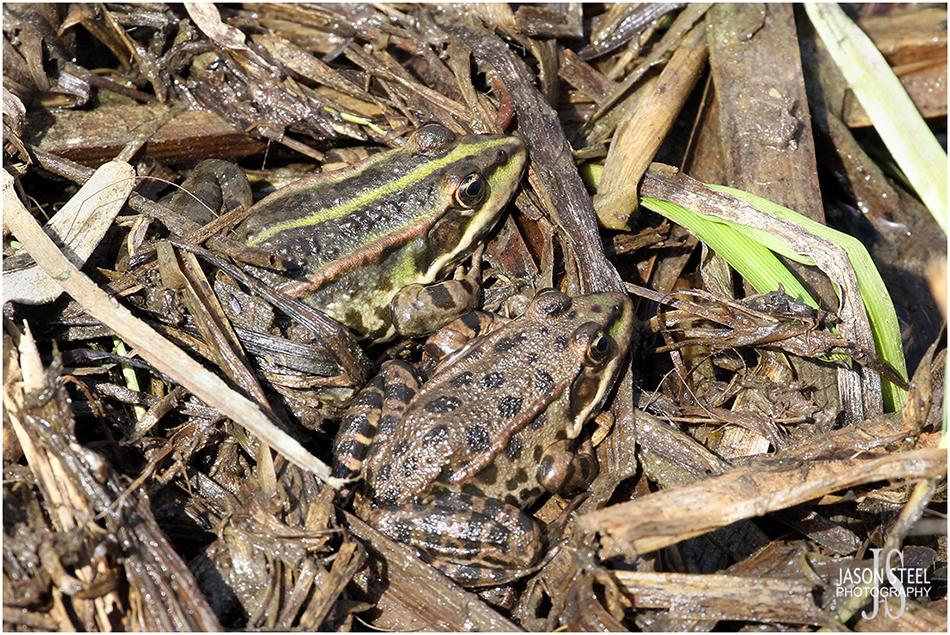
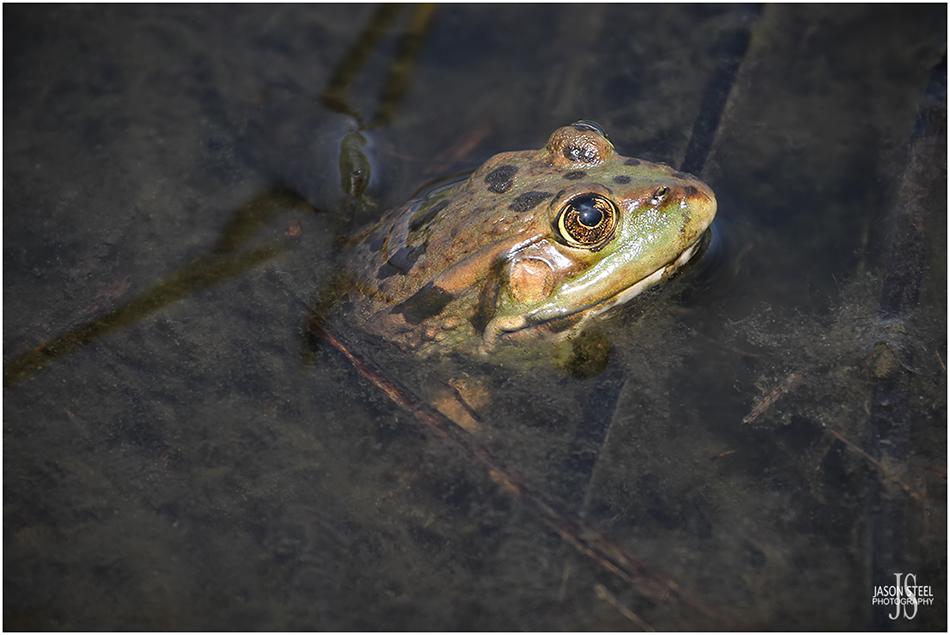
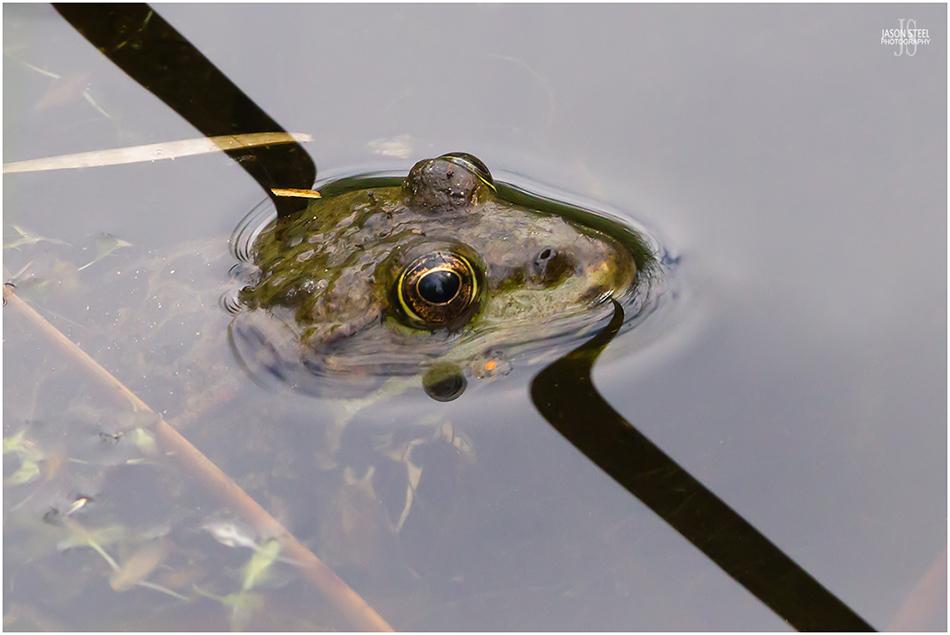
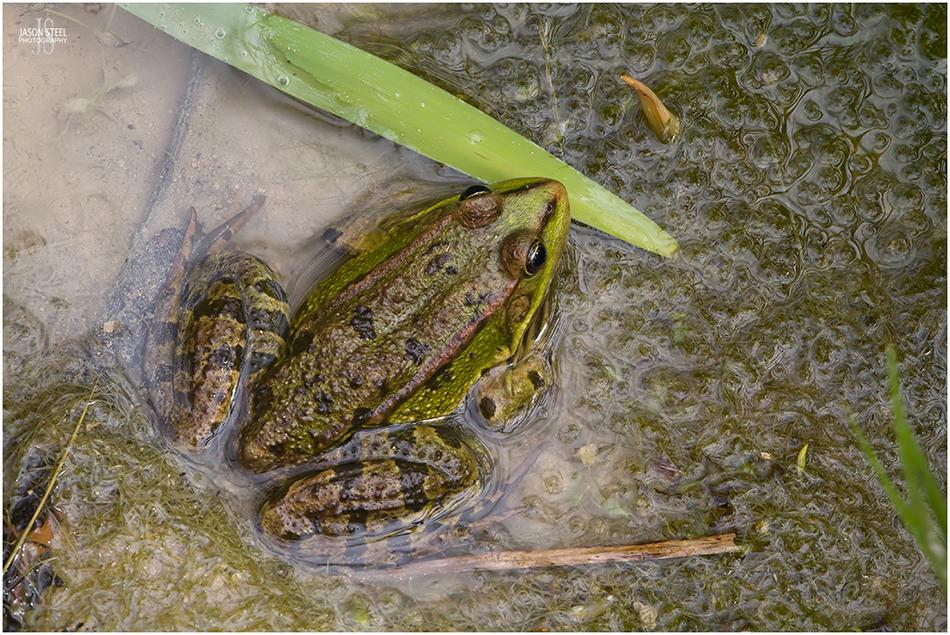
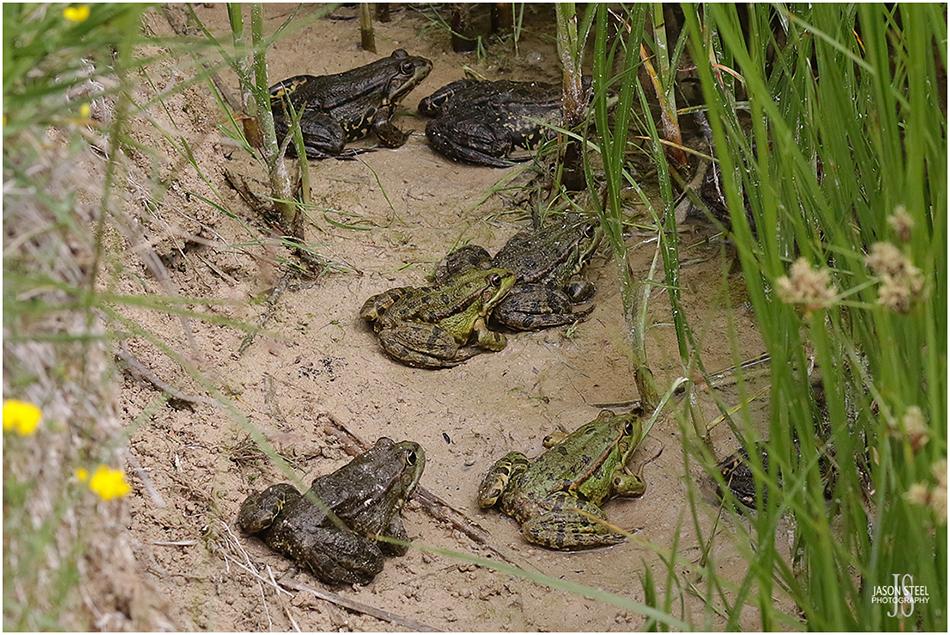
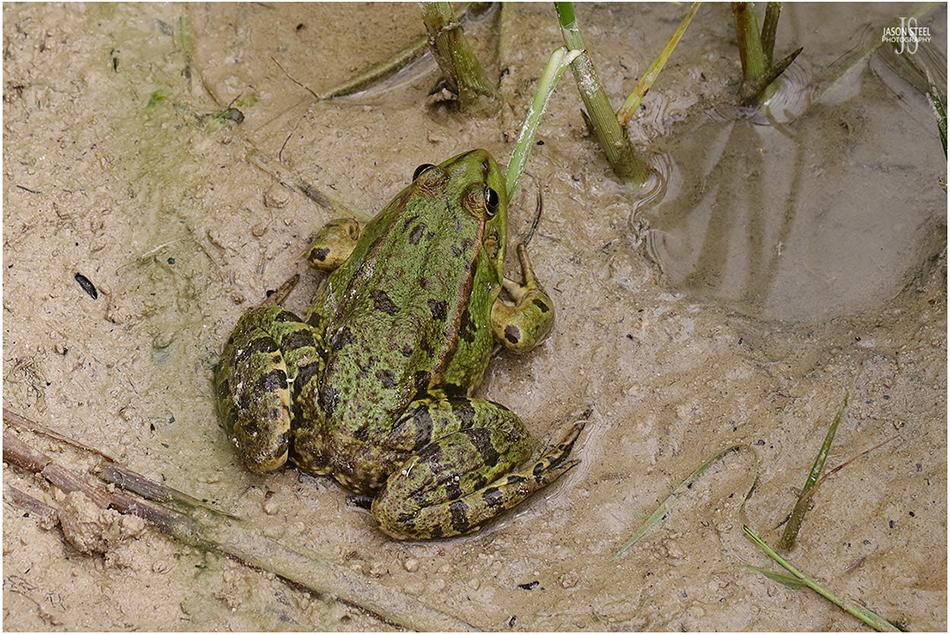
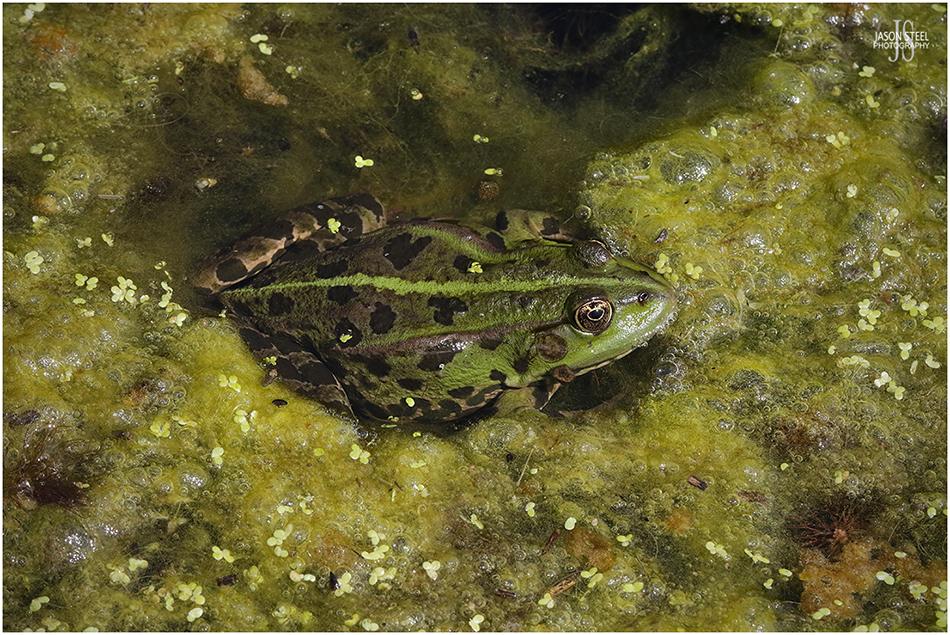
Newts
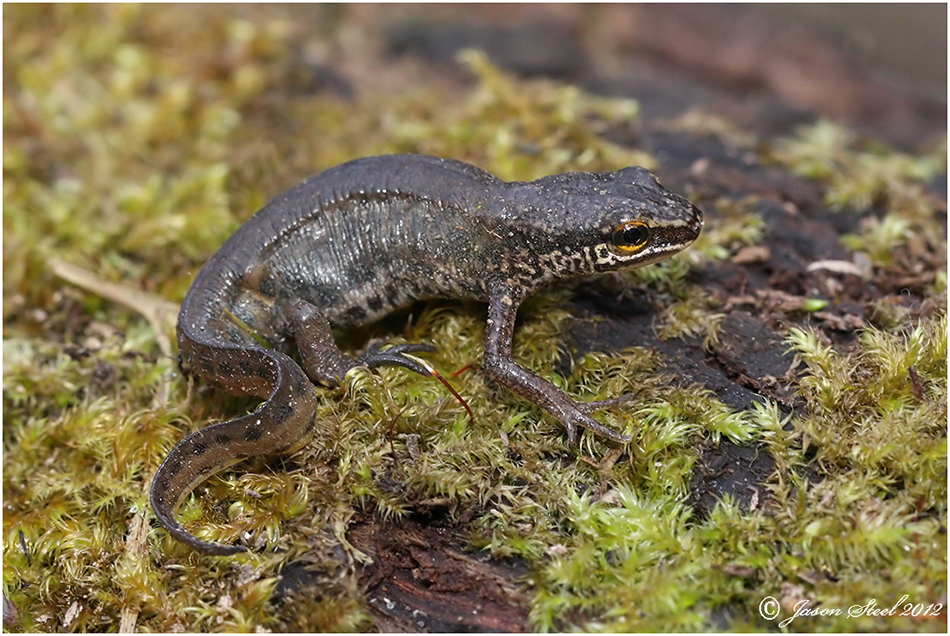
Palmate Newt (Lissotriton helveticus)
We have three newt species native to the UK, the Great Crested Newt, the Smooth Newt and the Palmate Newt. We also have breeding colonies of the non-native Alpine Newt in the UK. Newts are often mistaken for lizards but the two are very different creatures. Lizards are amphibians and lizards are reptiles. Lizards are very fast moving and Newts are quite slow by comparison. Lizards have 5 toes and Newts only have 4 toes!
The Palmate Newt is Britain's smallest newt species and usually grows to a maximum length of 80-90mm. These newts usually arrive at the breeding pond sites from February. Although sometimes they arrive at the end of autumn and spend the winter dwelling at the bottom of the ponds. Eggs are laid any time between March and June. A female newt can lay 200-300 single eggs attached to and concealed amongst underwater plants. The Palmate Newt is less frequently found in garden ponds than the Smooth Newt preferring ponds located on heathland, woodland and grassland sites.
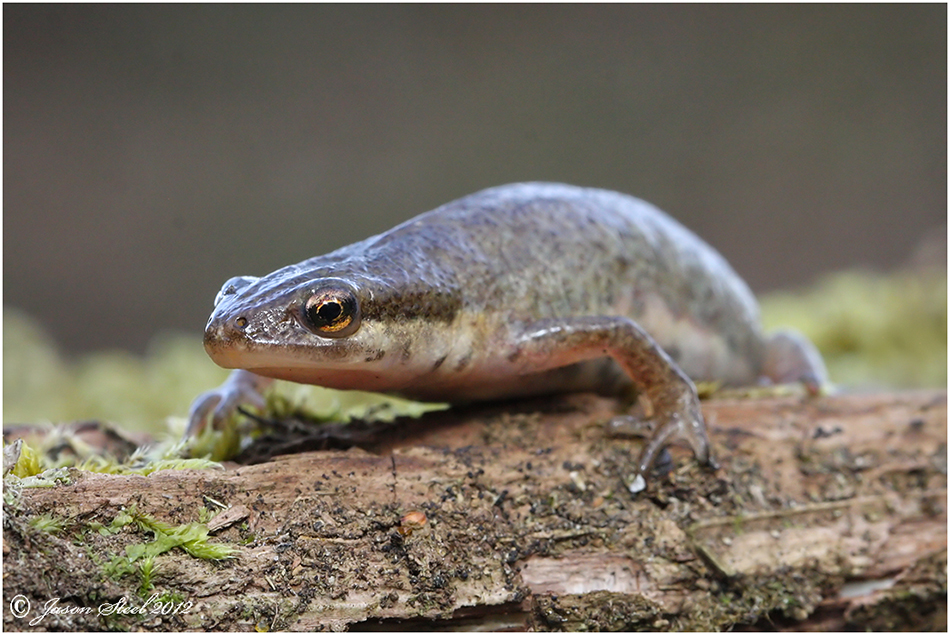
Newts being amphibians spend some of their life as a terrestrial species living on land and some of their life during the breeding season living in ponds as an aquatic species. Palmate Newts are a predominantly nocturnal species emerging at dusk to actively hunt for small insects and worms on land and similar sized aquatic crustaceans and insect larvae when in water. They will also feed on frog spawn and small tadpoles. Like frogs and toads newts also use their long tongue to catch their prey when on land.
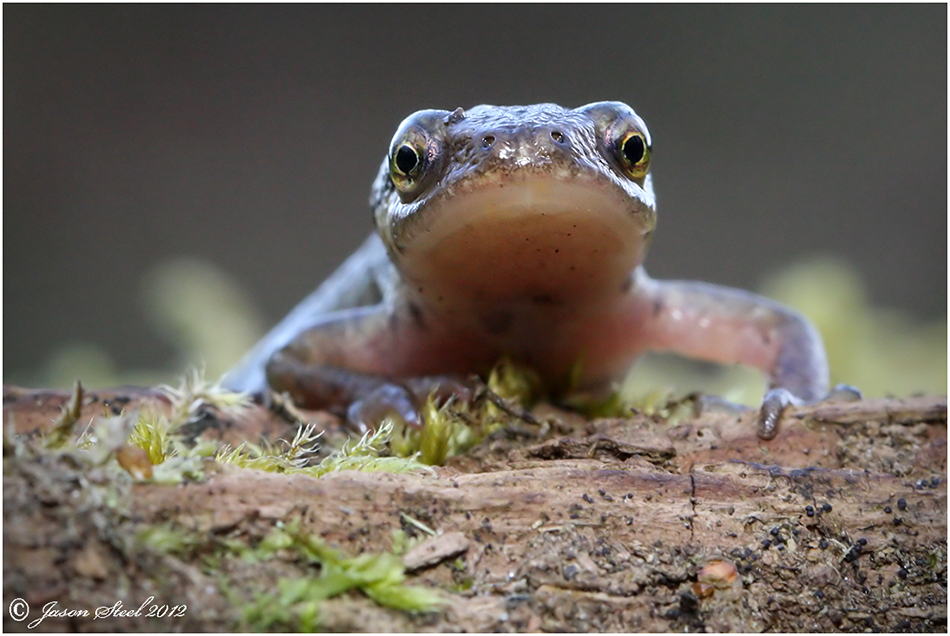
The Palmate Newt can look very similar in appearance to the Smooth Newt. One of the most reliable ways to tell them apart is to look at the throat. The Palmate Newt will usually have a translucent pink unspotted throat in comparison to the dull grey / cream-coloured spotted throat of the Smooth Newt. Spots are not always present on the throat of Smooth Newts though. Palmate Newts also have two small white tubercles on their heels that Smooth Newts do not possess. During the breeding season the males develop distinctly frilled / webbed hind feet. They also develop a thin filament at the end of the tail which can be between 4-7mm in length. Males tend to have larger more prominent spots on the upper body and tail than the females. Males also tend to be slightly smaller than the females. The female can look quite plump in the breeding season prior to depositing her eggs.
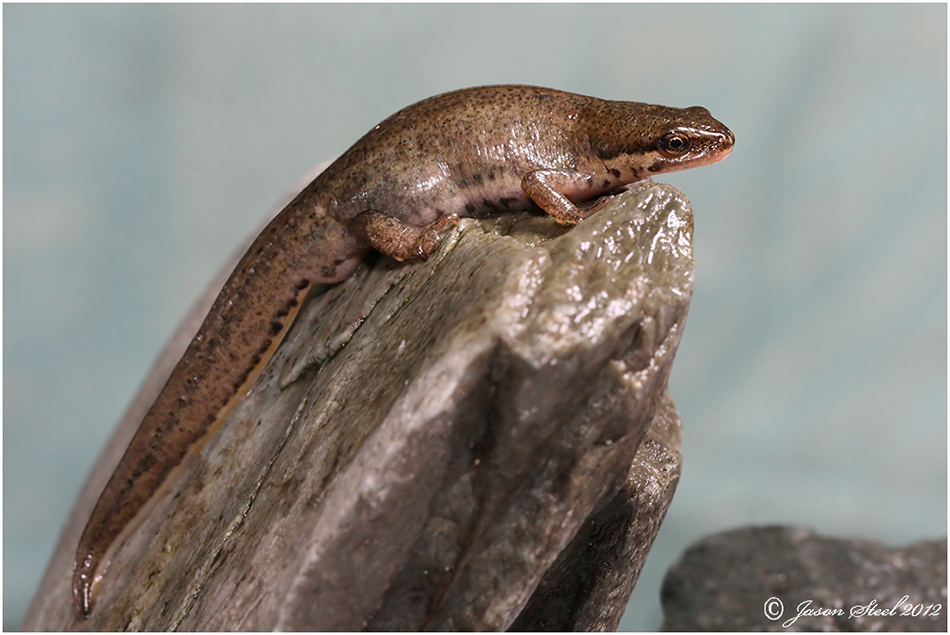
Palmate Newts have been known to live for up to 19 years in captivity. In the wild they are found throughout the UK and Western Europe but are absent from Ireland.
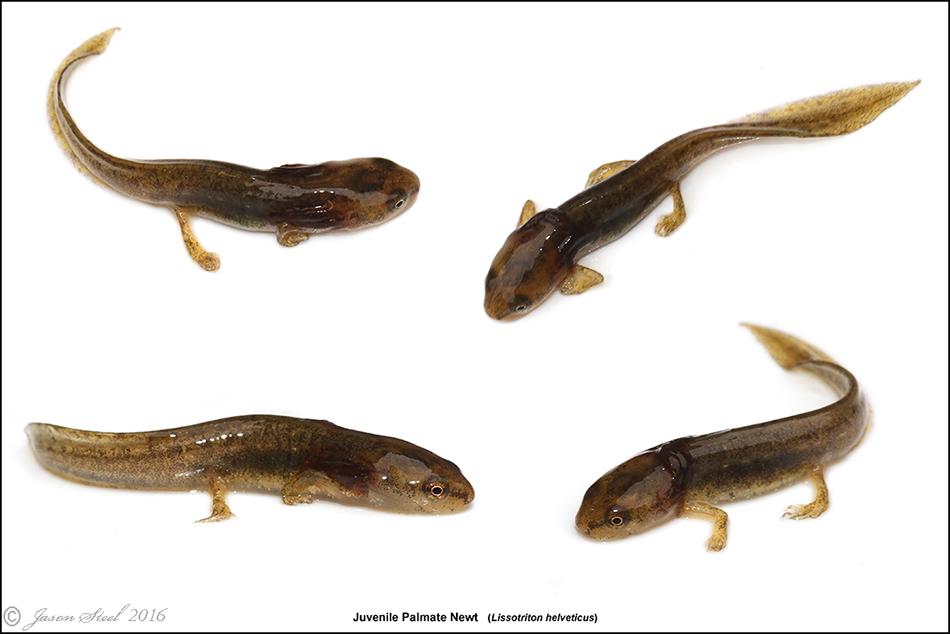
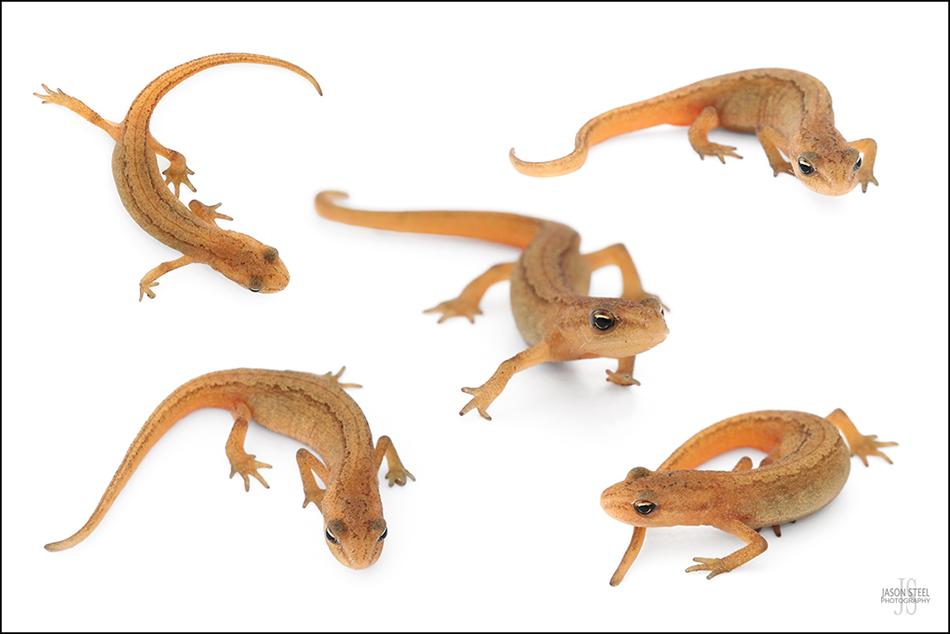
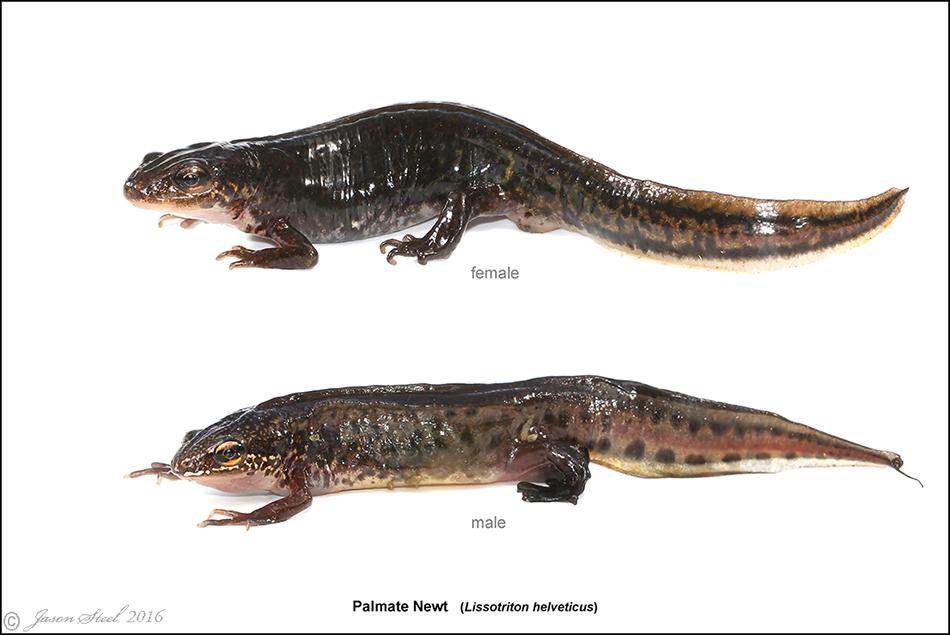
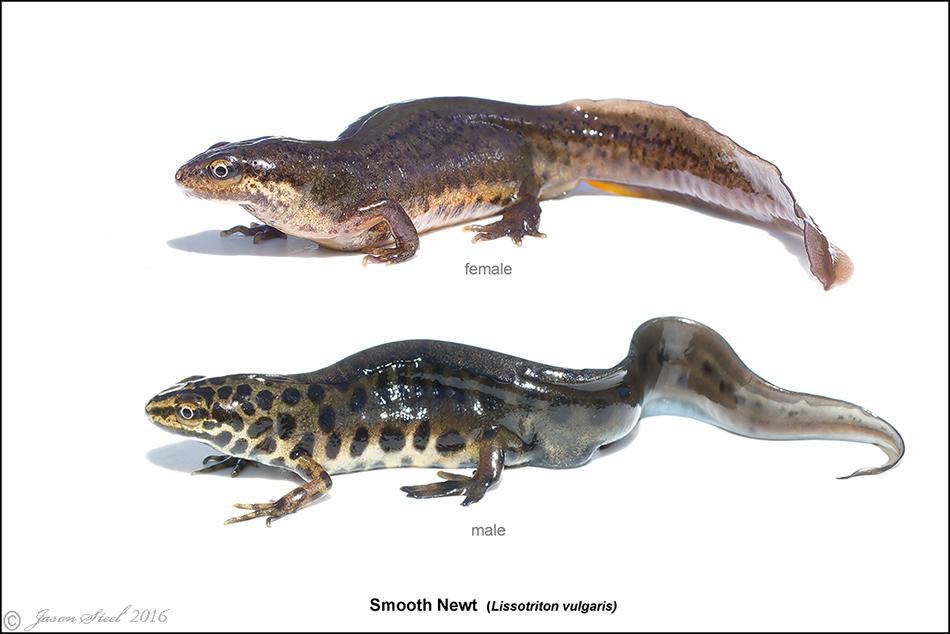
Smooth Newt (Lissotriton vulgaris vulgaris)
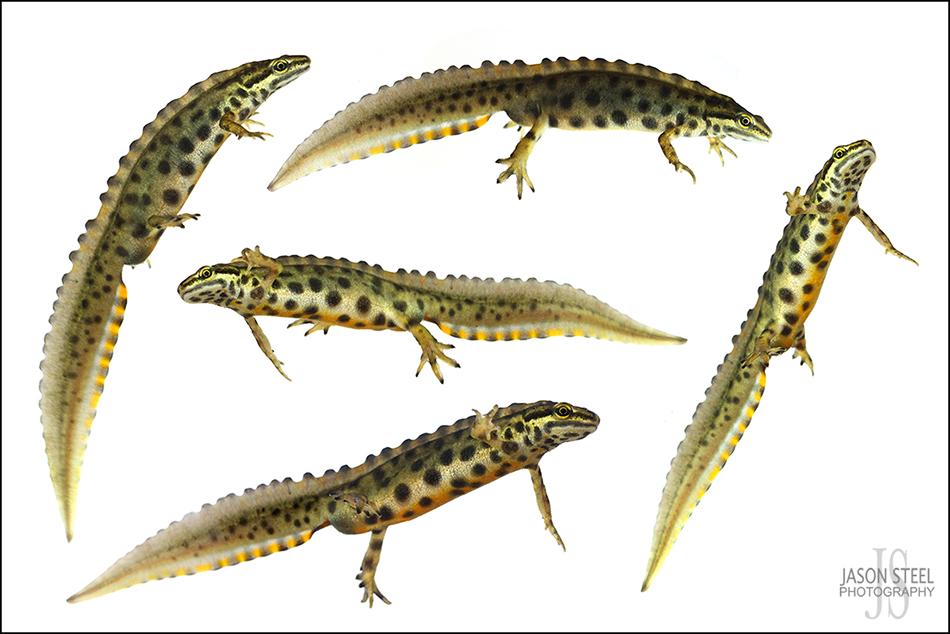
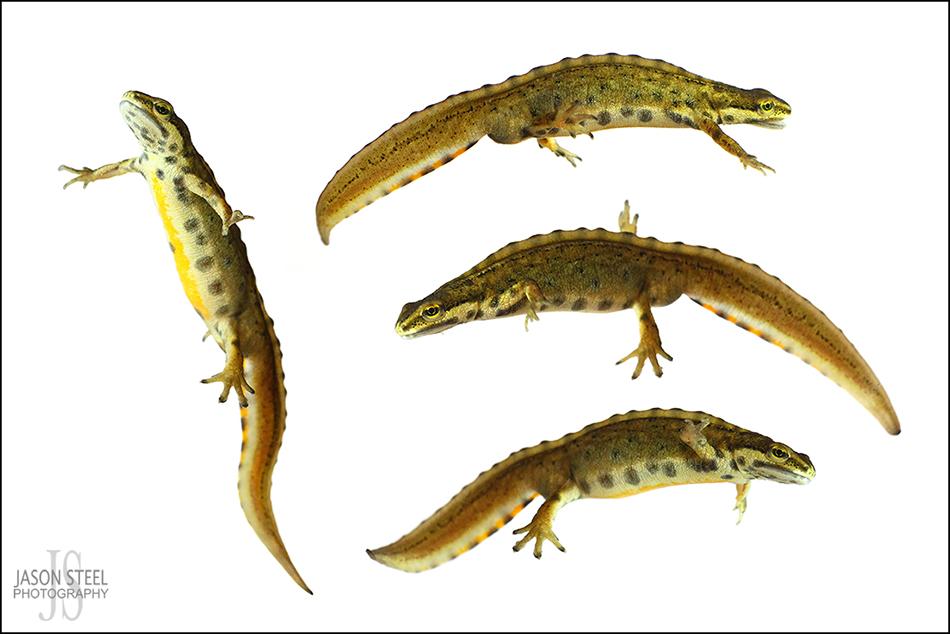
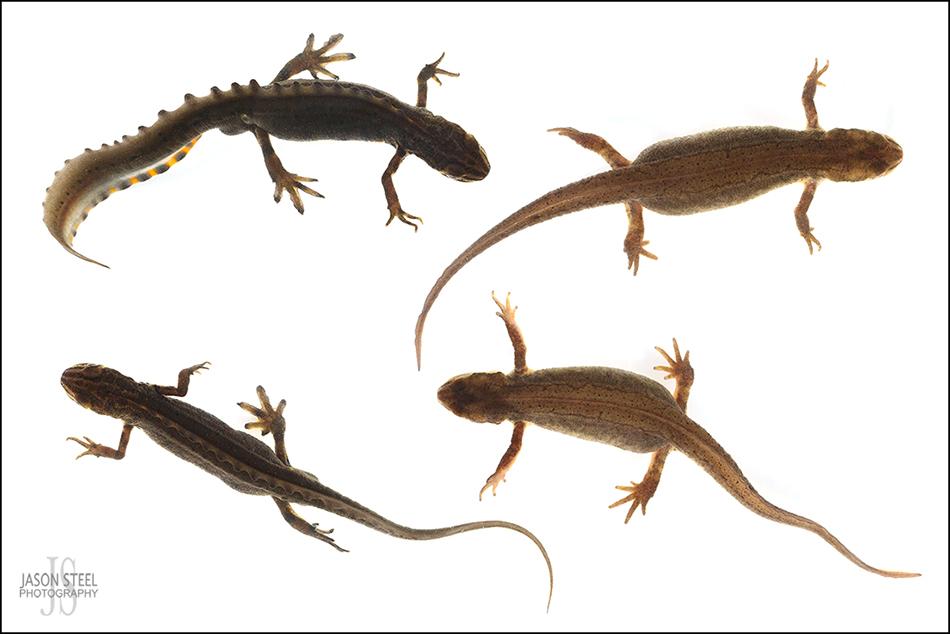
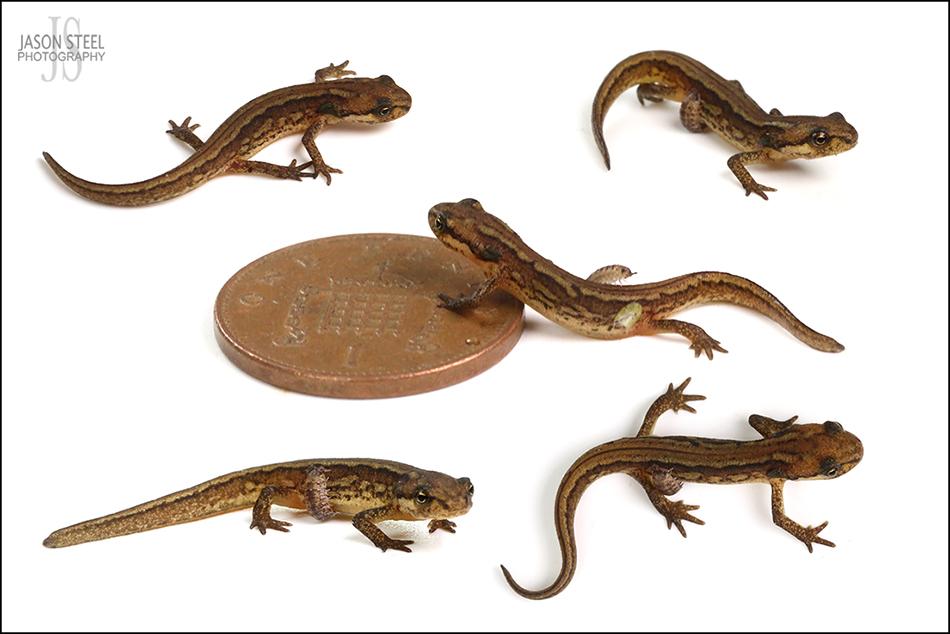
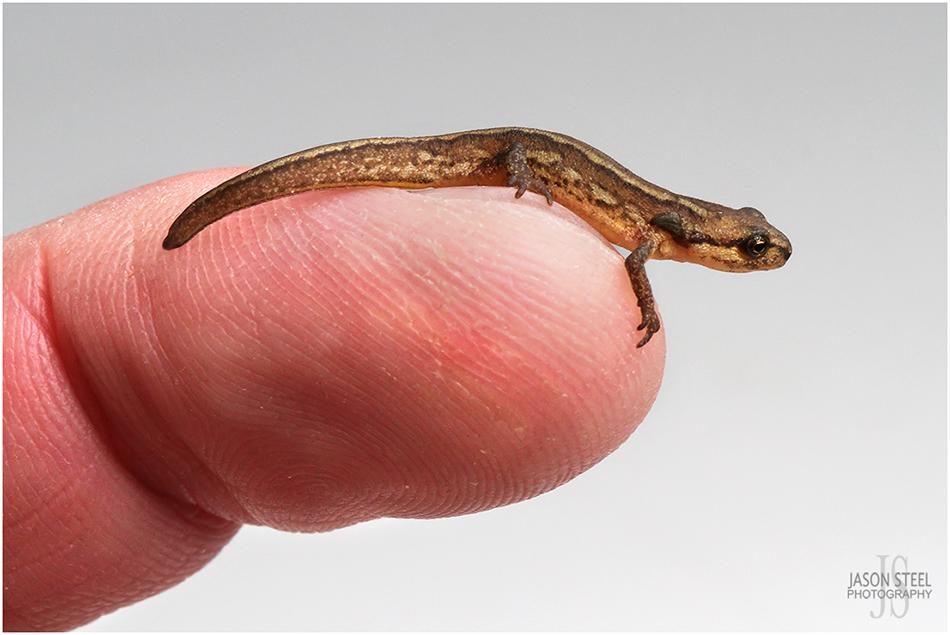
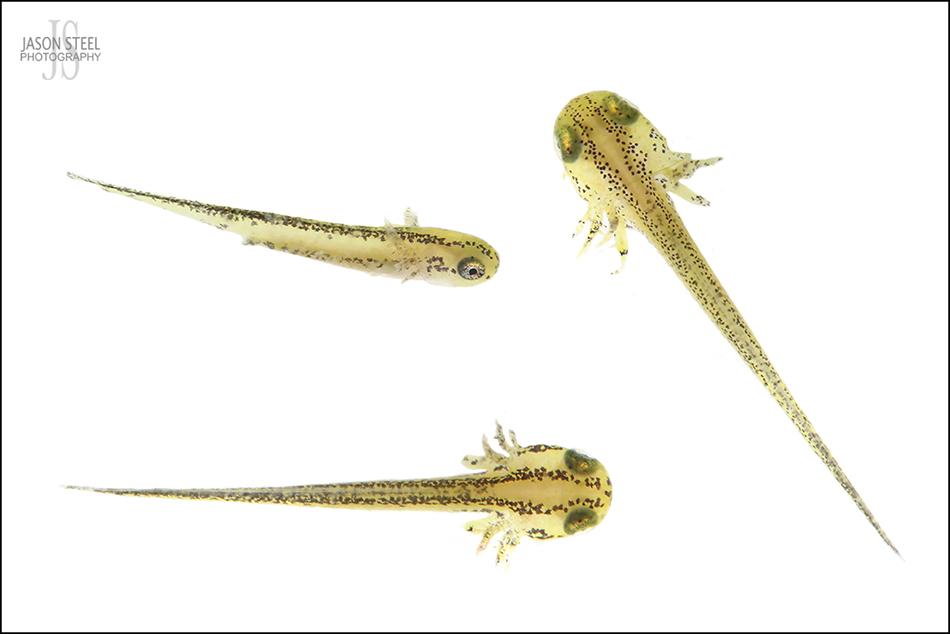
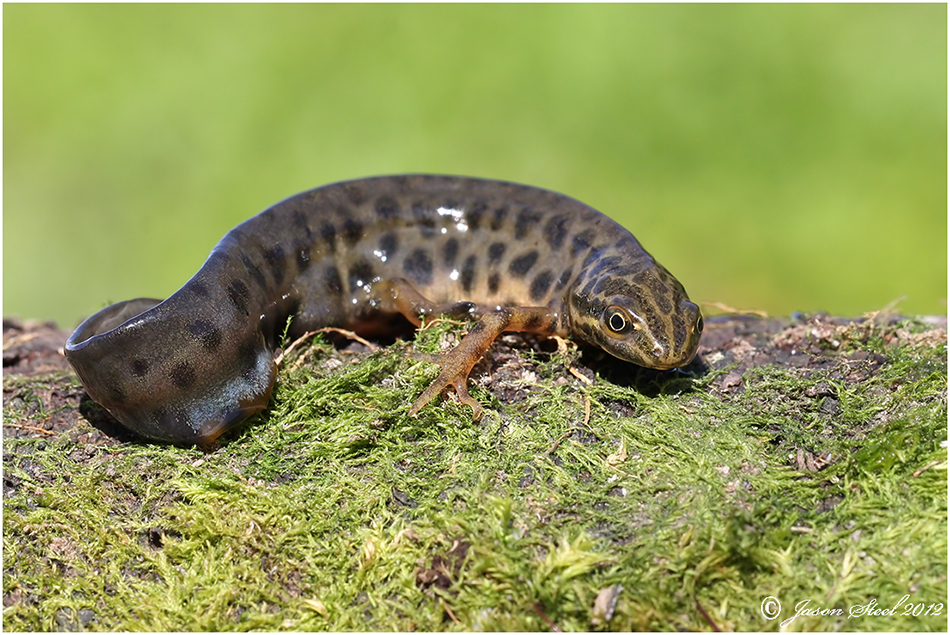
One of the reasons behind the success of the Smooth Newt in Britain is its willingness to travel great distances during its terrestrial phase. It will often quickly discover and colonise new ponds and can sometimes be found in huge numbers in even small ponds. This may help it to survive as its natural habitat is lost through development and agriculture.
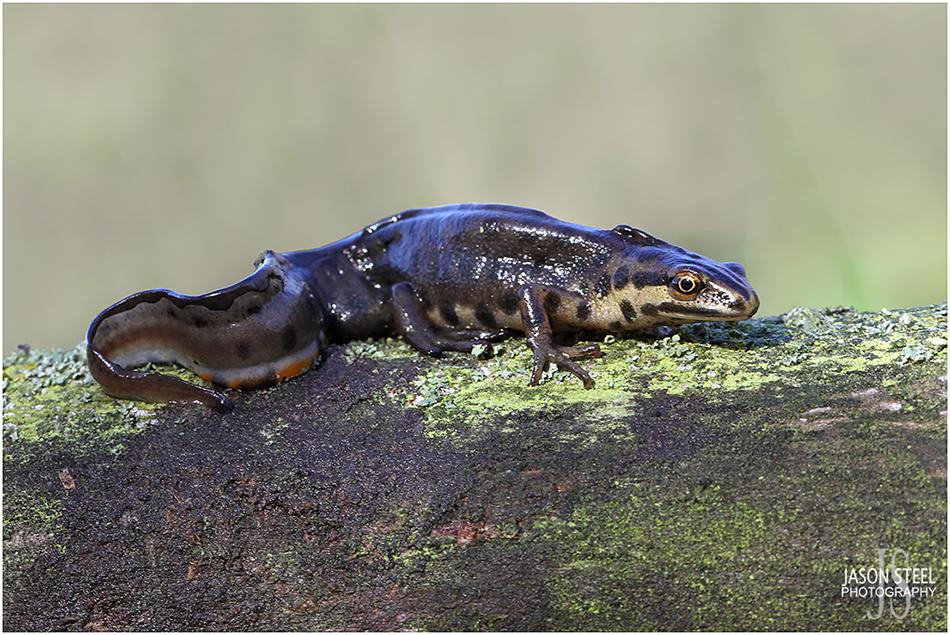
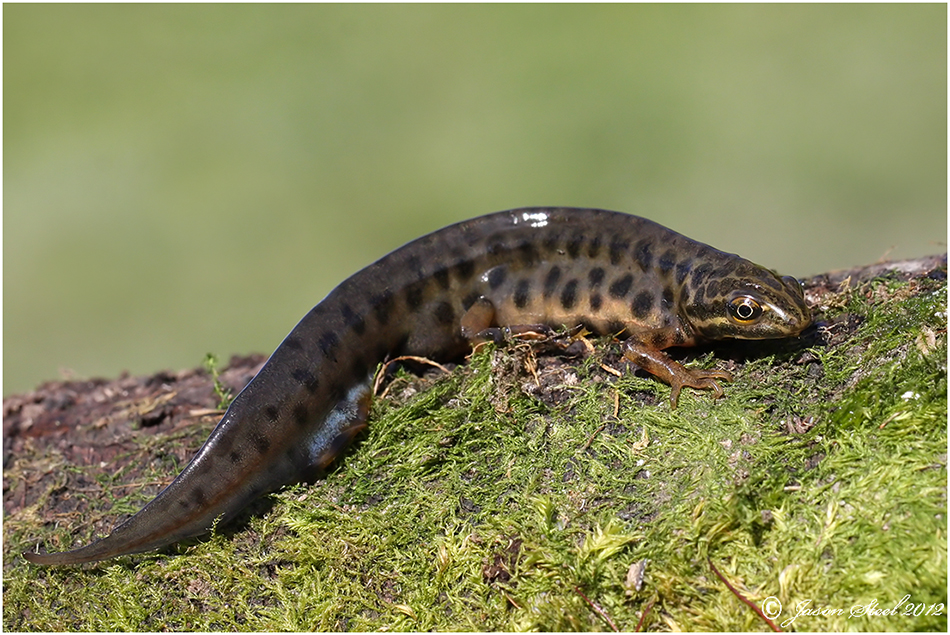
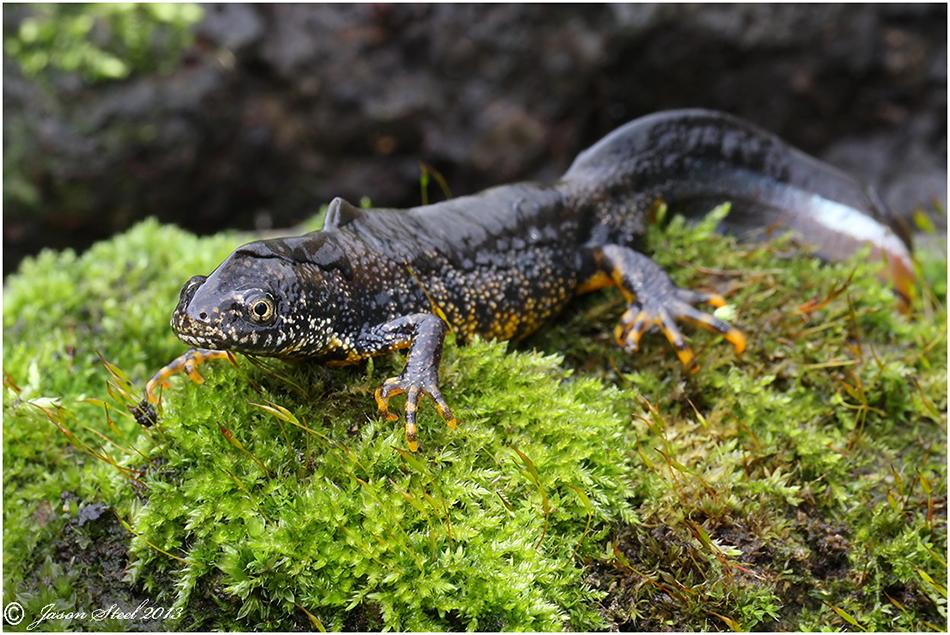
Male Great Crested Newt
Great Crested Newt (Triturus cristatus)
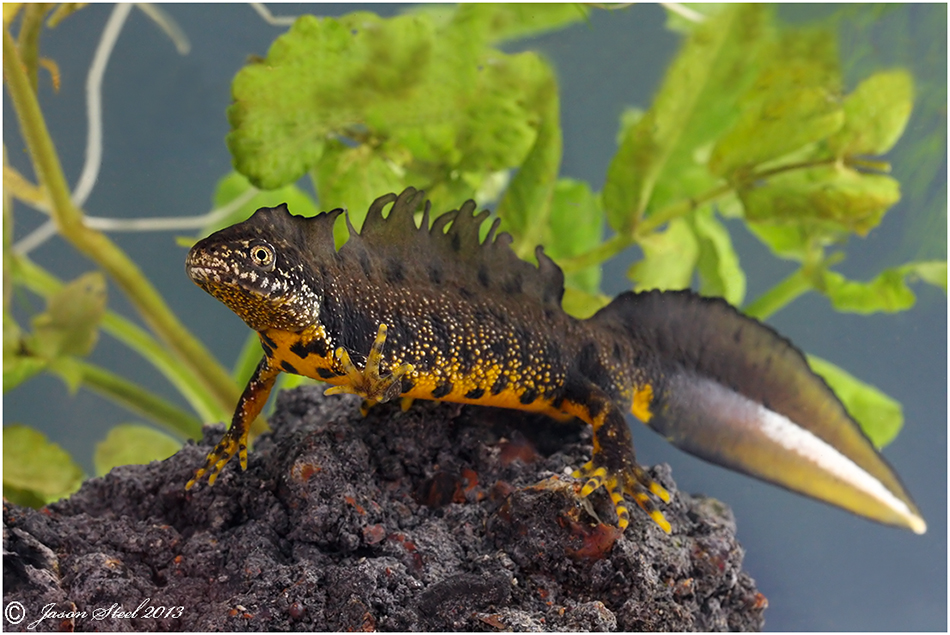
Male Great Crested Newt
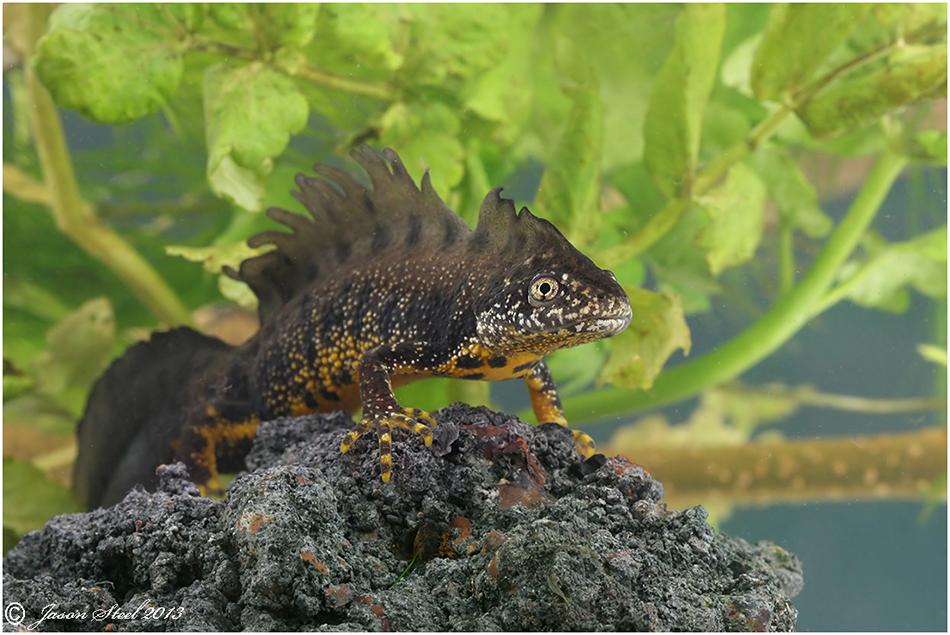
Male Great Crested Newt
Great Crested Newts are ferocious hunters and will prey on snails, insects, water fleas, tadpoles and even smaller newts. Out of water they will readily prey on slugs and earthworms too. Larger victims are sometimes grabbed in the newts mouth and violently shaken to stun the prey. GCNs have been known to live for over 15 years but this is rarely achieved in the wild due to predation.
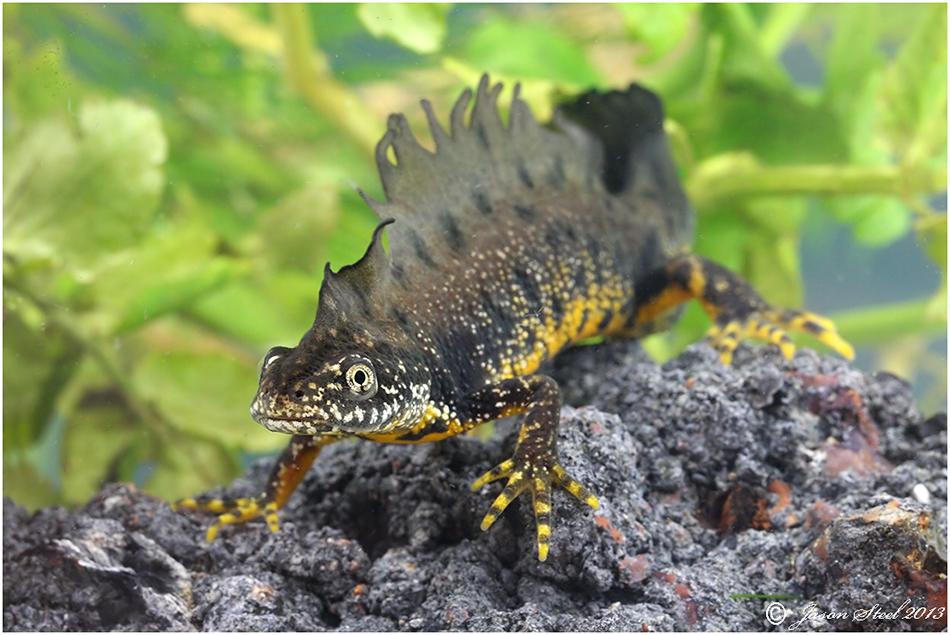
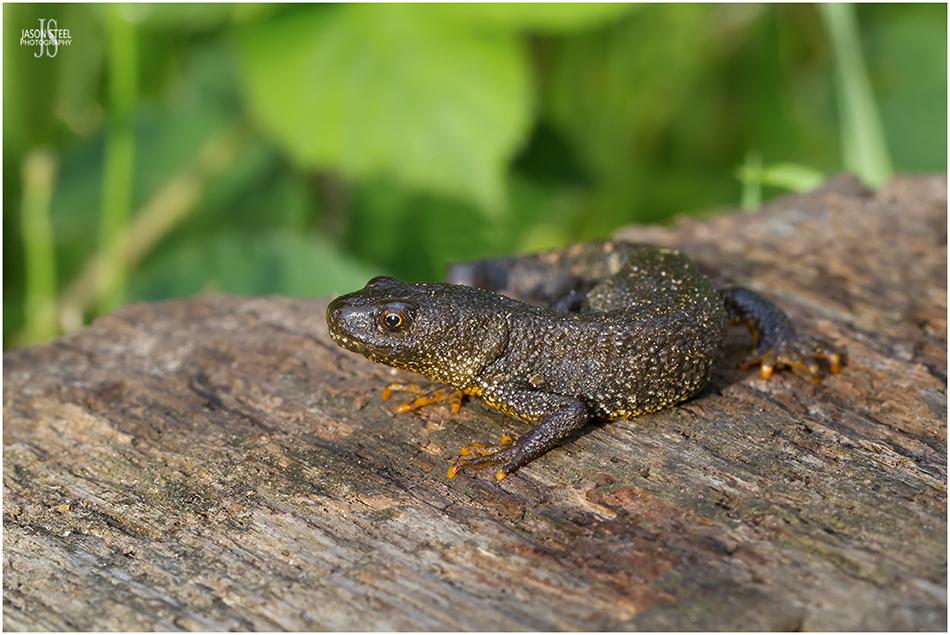
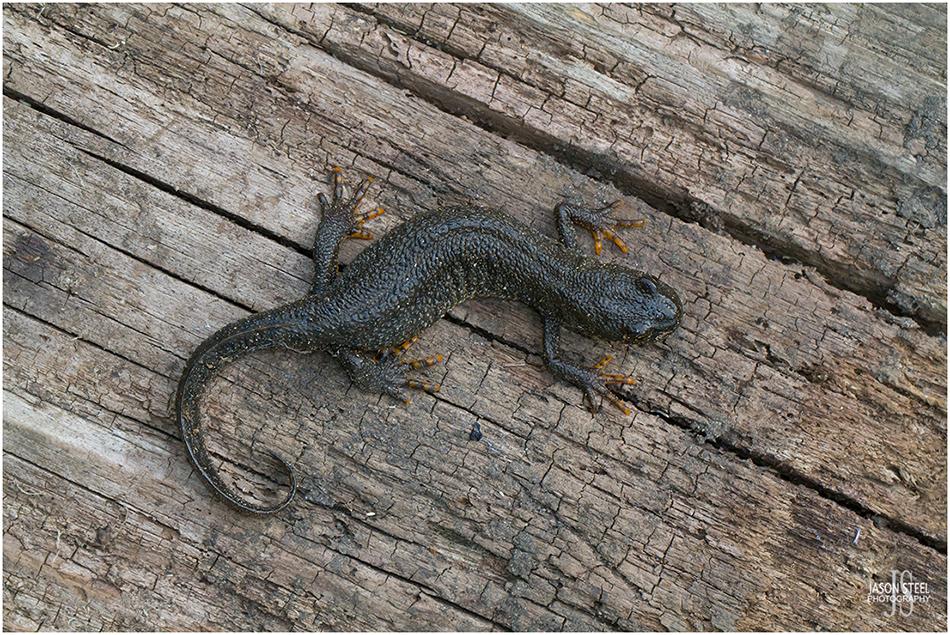
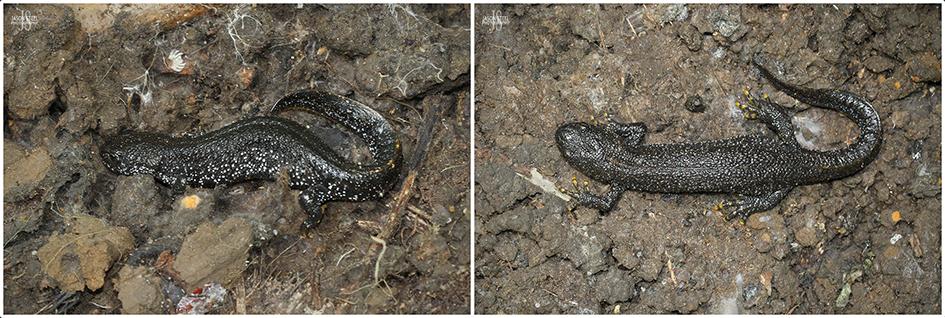
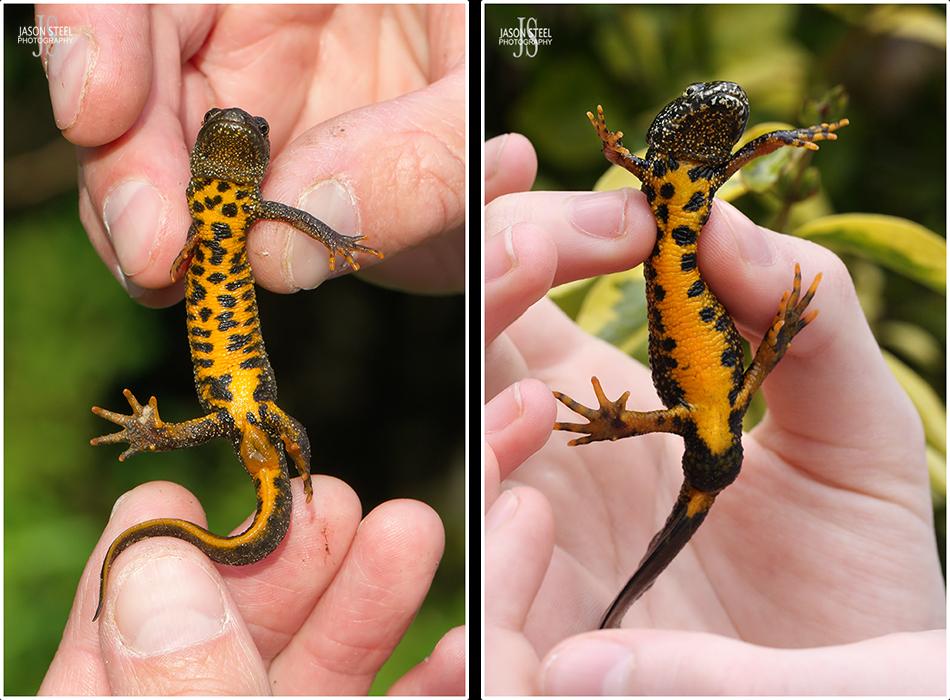
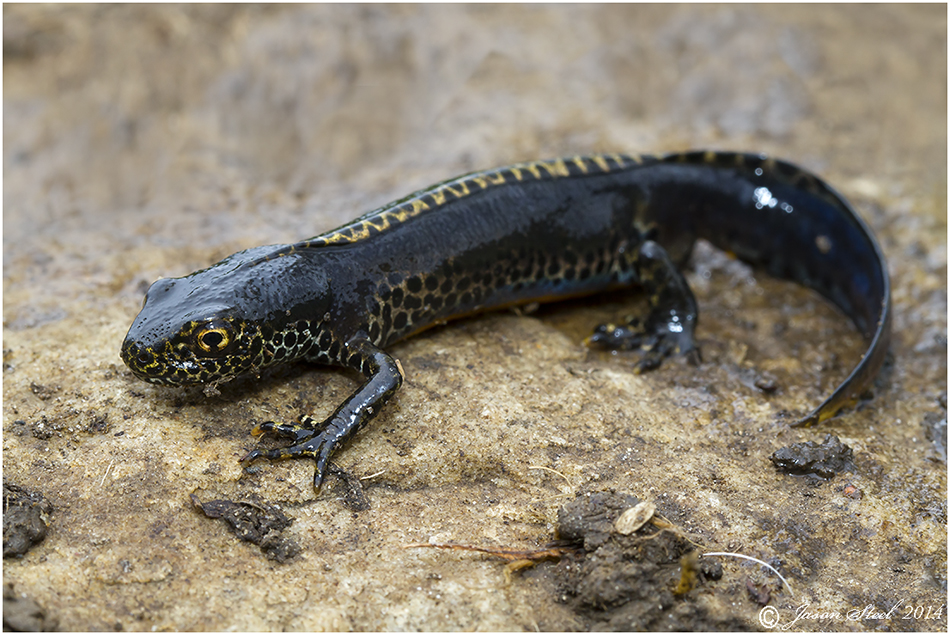
Alpine Newt (Mesotriton alpestris / Triturus alpestris)
Alpine Newts are are not native to the UK but they are another introduced species from Europe that has now managed to successfully breed at many sites across the UK. They are not generally considered to be a major threat to our indigenous species but more research needs to be done to accurately evaluate their impact on our native wildlife. They were first recorded in the UK in Surrey back in the 1920's. They can grow to around 11cm in length but they are not quite as sizeable as our native Great Crested Newts.
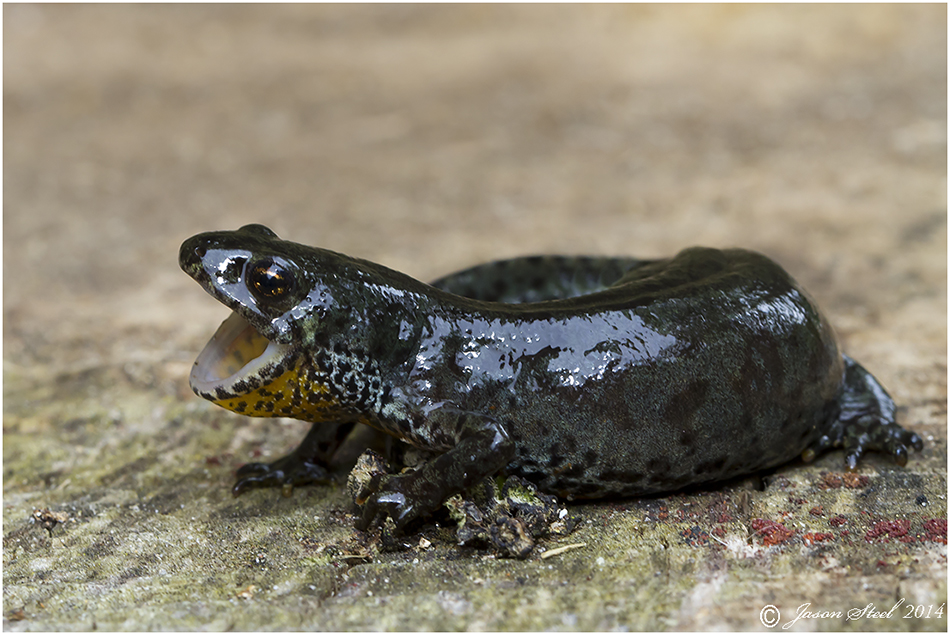
The Alpine Newt has blue/green marbled skin with both sexes having a bright orange / yellow (usually unspotted) underside with a blue stripe at either side. They do not have the warty skin of the Great Crested Newt or the black eye stripe of the Smooth Newt. During the breeding season the male (pictured above) has a small black-spotted yellow / white dorsal crest and rows of black spots along its sides.
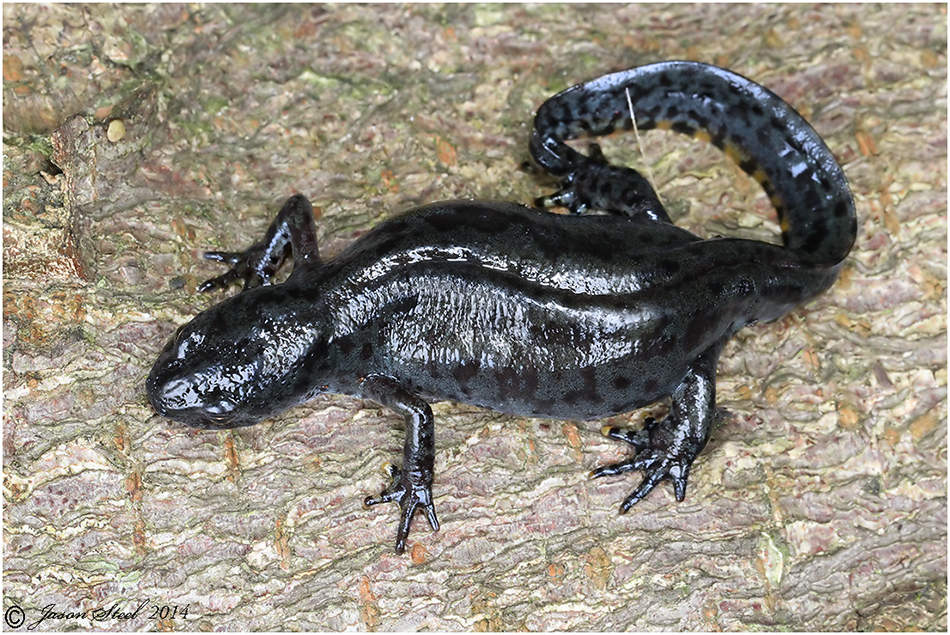
They are most commonly found in urban areas in garden ponds where they have been deliberately released. The Alpine newt is believed to be a carrier of the highly dangerous Chytrid fungus so all sightings should be reported so the populations can be tested for this virus before it can spread to our native amphibians. In captivity these newts live for 15 - 20 years.
---------------------------------------------------------------------------------------------------------------------------------------------------------------
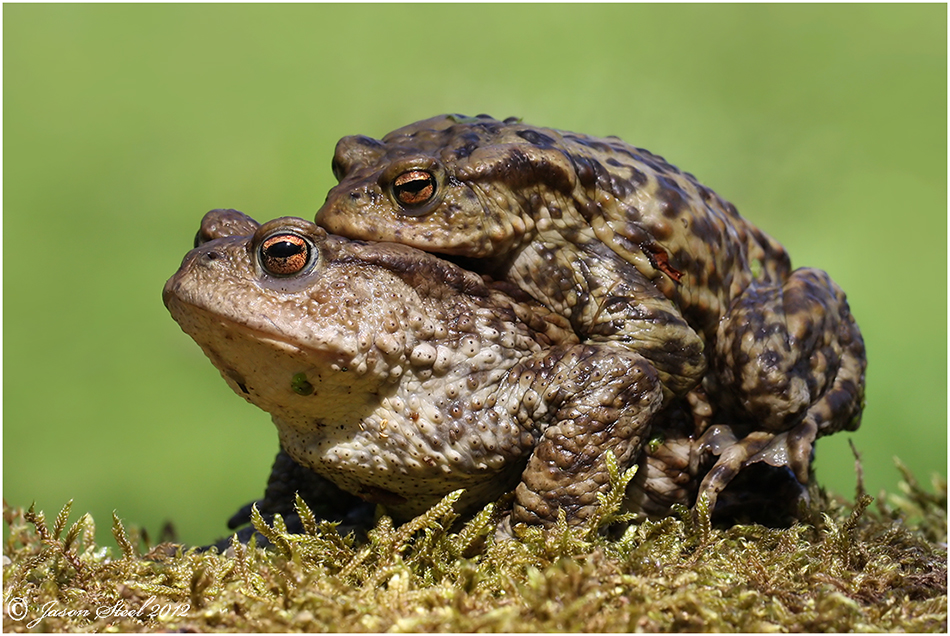
Common Toads
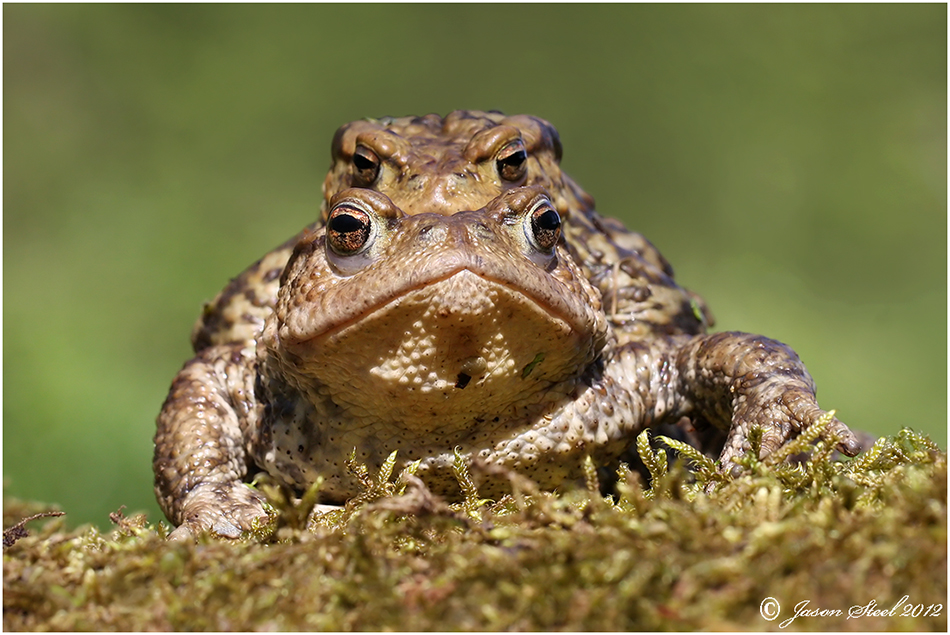
Toads on occasion prefer to spawn in temporary pools. Ponds, lakes and streams are often already full of predators waiting for the arrival of toad / frog spawn to eat. Temporary pools have less predators. This is a gamble though for the toads as the pools usually have less cover for the tadpoles and also often dry out before the tadpoles mature and are able to survive on dry land as toadlets. Sometimes the gamble pays off and sometimes it doesn't.
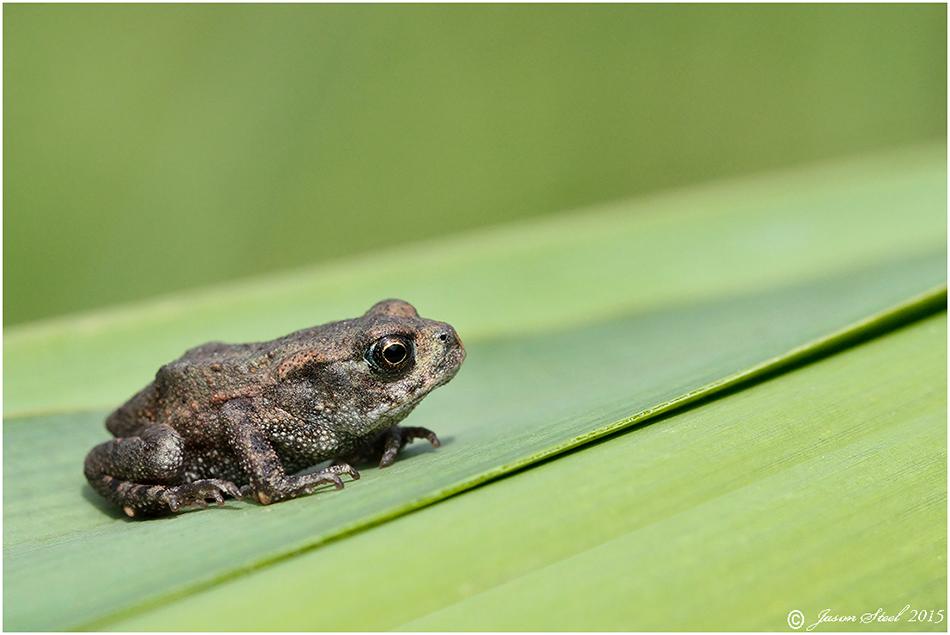
From spawn to Toadlet in about four months. Toadlets usually emerge from the pond later than Froglets and this often occurs after good rainfall during the summer. This Toadlet was just 12mm in length and was photographed as in left the pond in mid-July. Once out of the pond life is a little safer for the tiny Toadlet. Due to Toads secreting the toxic and foul-tasting irritant "bufagin" from the parotoid glands, on the back of its neck , most would-be predators quickly learn to avoid eating Toads. This secretion is an effective defence against most mammal predators. These toxins aren’t fatal to mammals and rarely cause more harm than vomiting and foaming of the mouth. However any cats or dogs that show symptoms for more than 24 hours should be taken for veterinary evaluation.
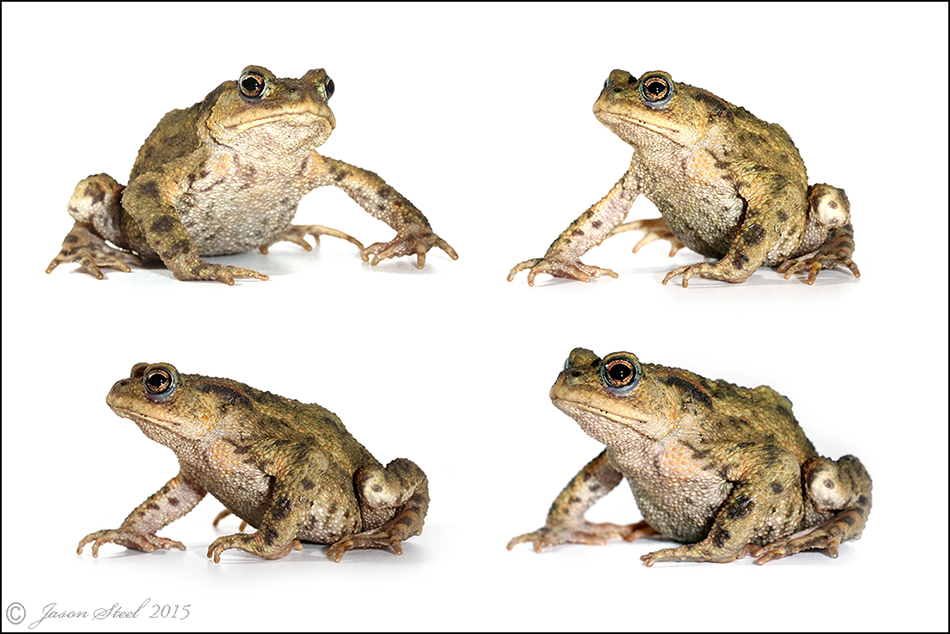
Young adult female Common Toad.
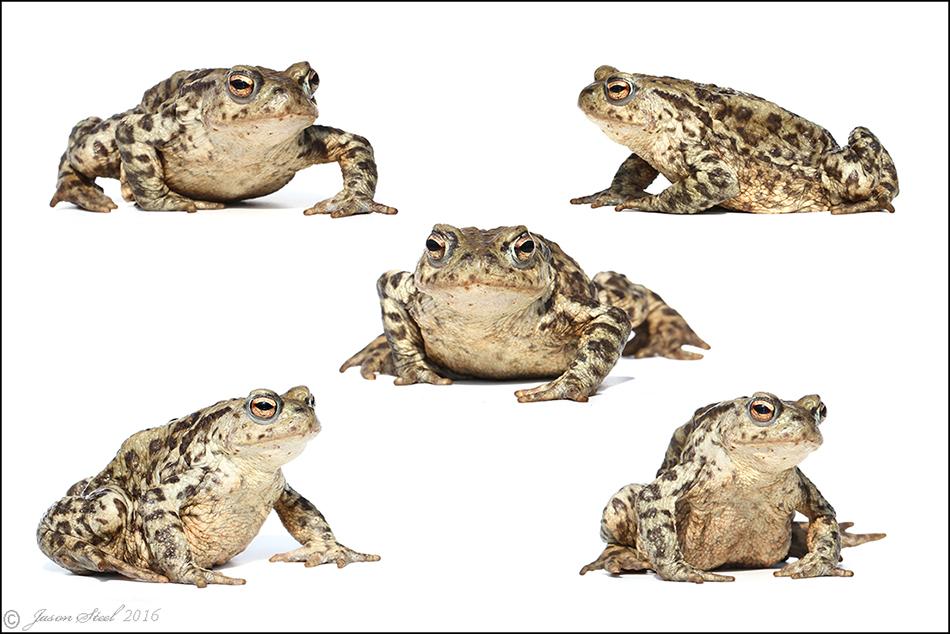
Large adult female Common Toad.
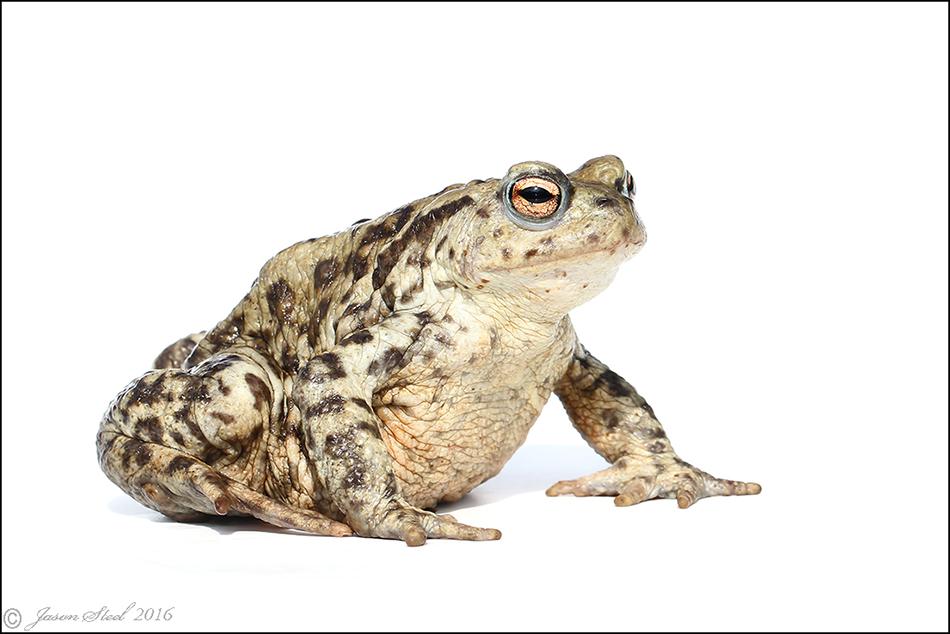
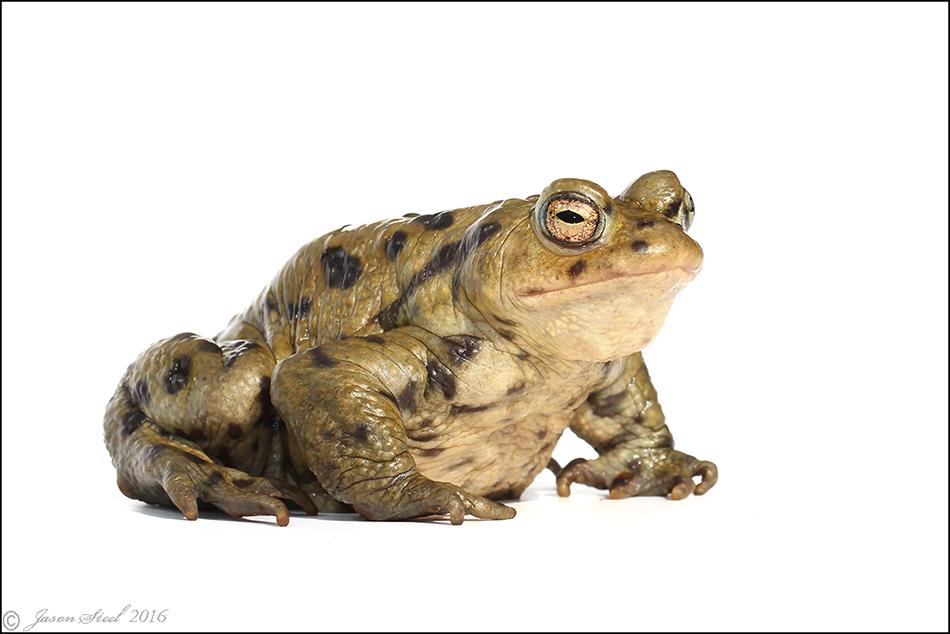
Adult male Common Toad.
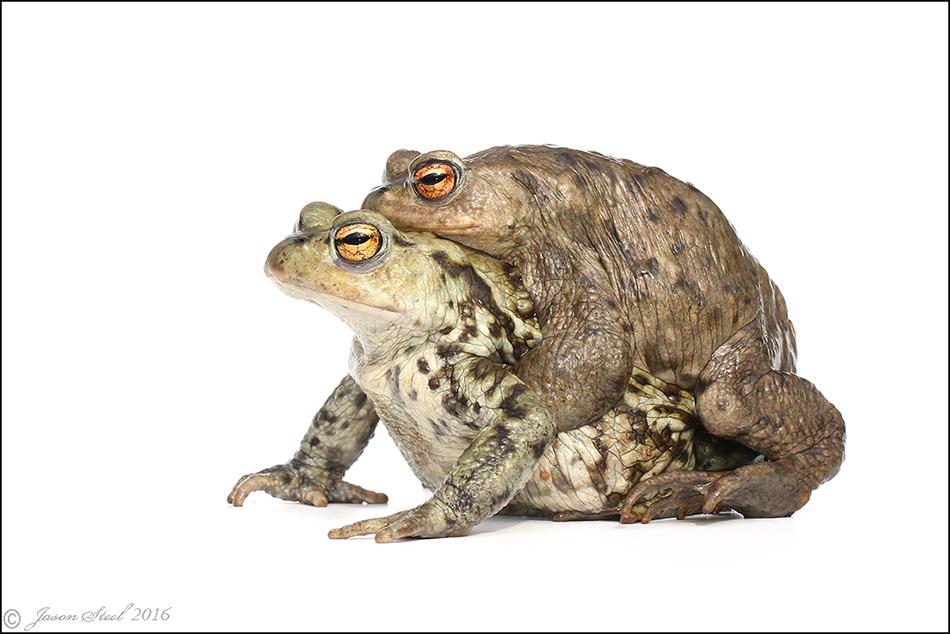
Common Toads in amplexus.
This shot clearly shows one of the key features to identifying the sex of adult toads, the large, muscular and powerful forearms of the male toad, that are used to grip tightly onto the female whilst in amplexus.
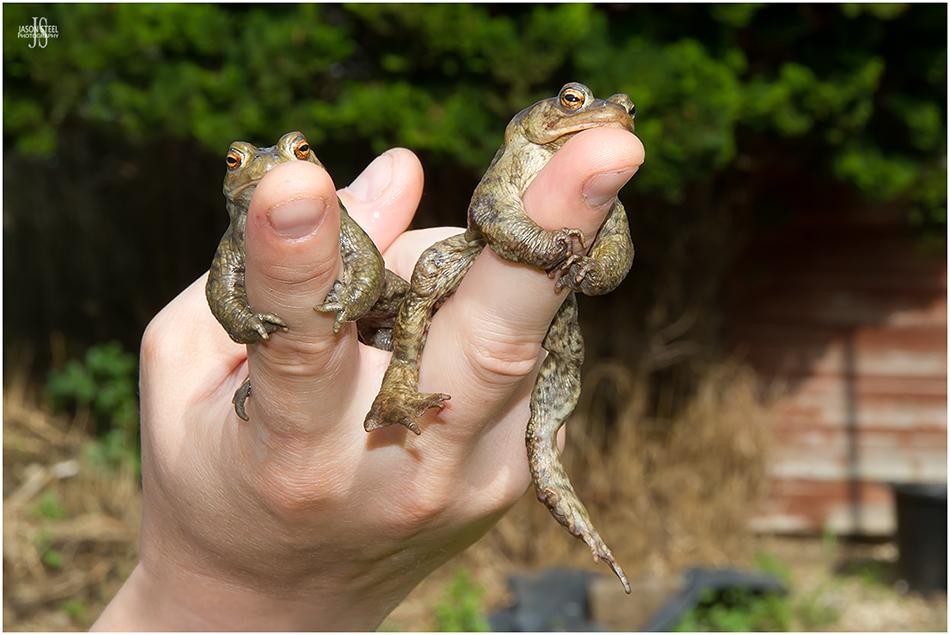
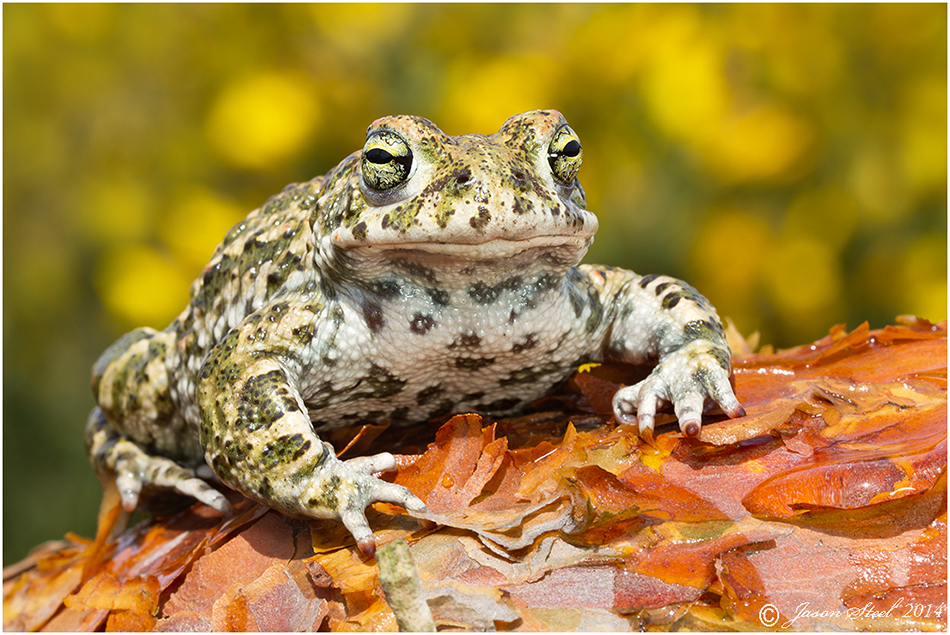
Natterjack Toad (Bufo calamita/Epidalea calamita)
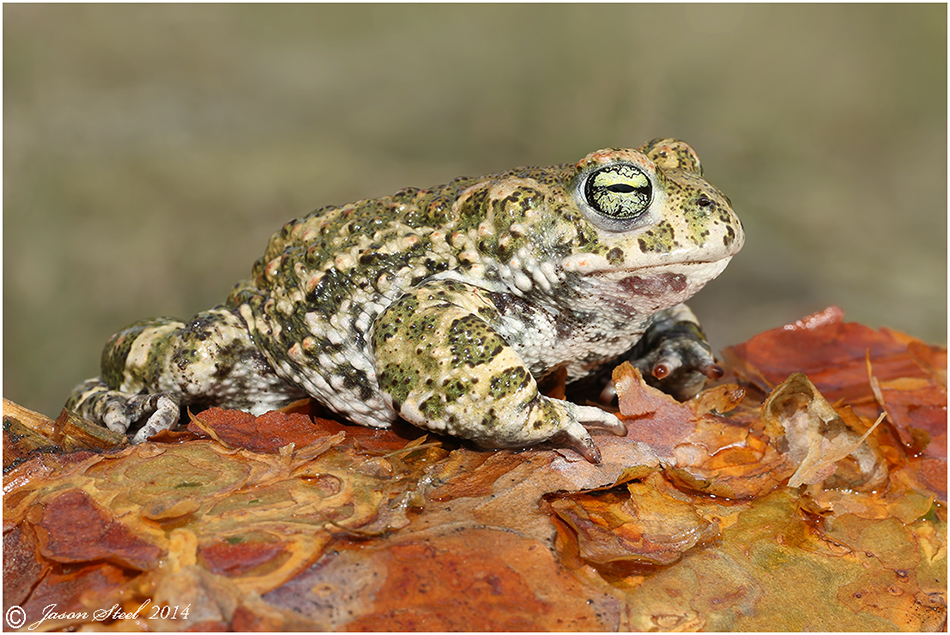
These toads are known as the "running toad" as they tend to run rather than hop to chase down insect prey with their short limbs. They have beautiful green or yellow eyes with a vertical slit-pupil. The skin is generally light green or cream coloured with a distinctive yellow stripe running along the centre of its back. They also have many visible warts that are often red or yellow in colour.
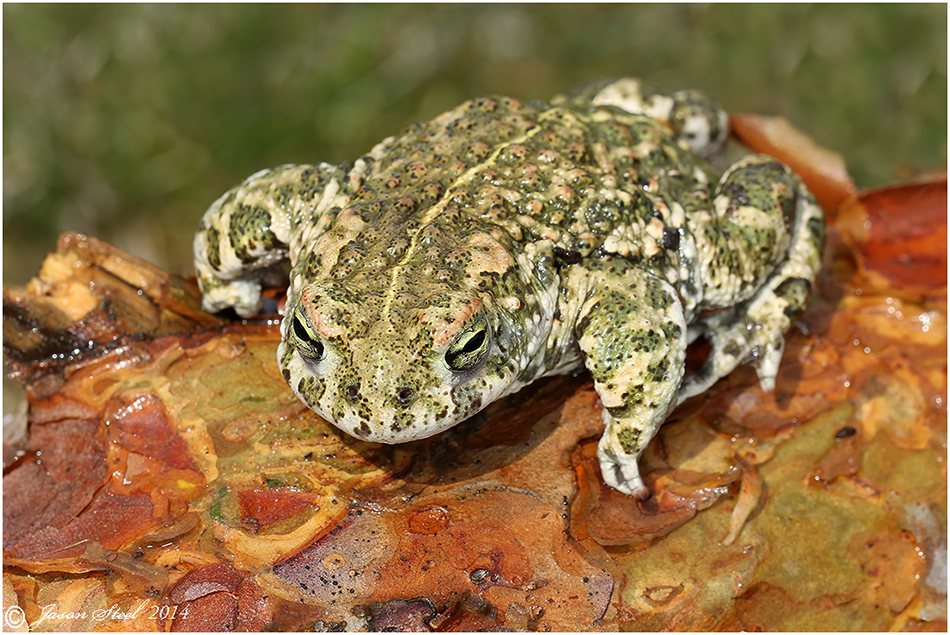
In the UK these toads are found mainly at sandy sites such as coastal sand dunes and lowland heath sites. They prefer areas of open and unshaded bare ground where foraging and tunnelling is easier. Natterjack Toads mate slightly later in the year than the Common Toad with mating usually taking place from March to May. Like the Common Toad the eggs are laid in long strings but these egg strings are single and not double rows like that of the Common Toad.
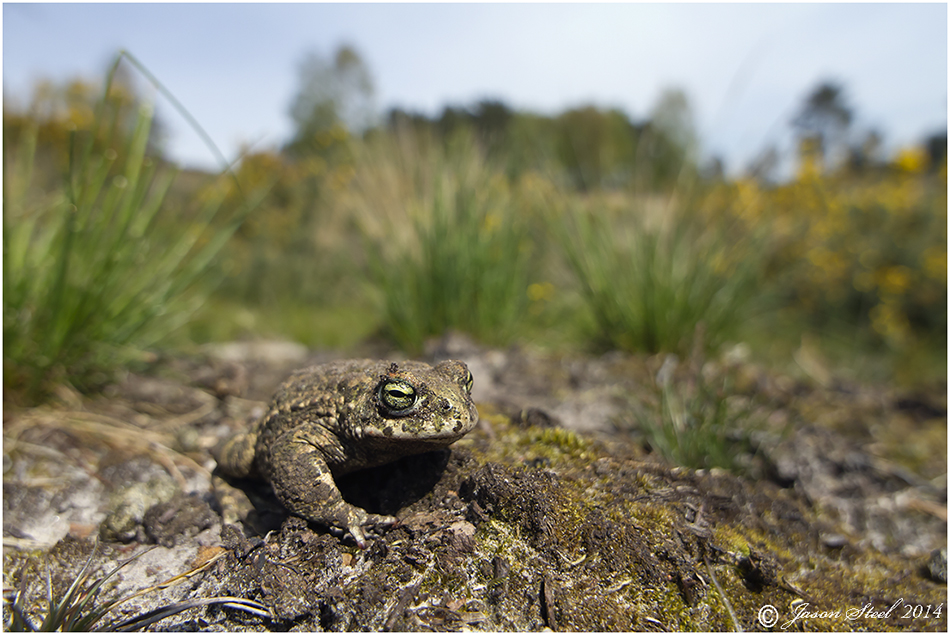
Natterjacks secrete toxins through their parotoid glands and skin to deter predators but this doesn't protect them from the Grass Snake which seems unaffected and will readily prey on these small defenceless amphibians. During the daytime the short limbs of theNatterjack are used to great effect to burrow into loose sand or soil and they can often be found sharing shallow burrows with other Natterjack Toads.
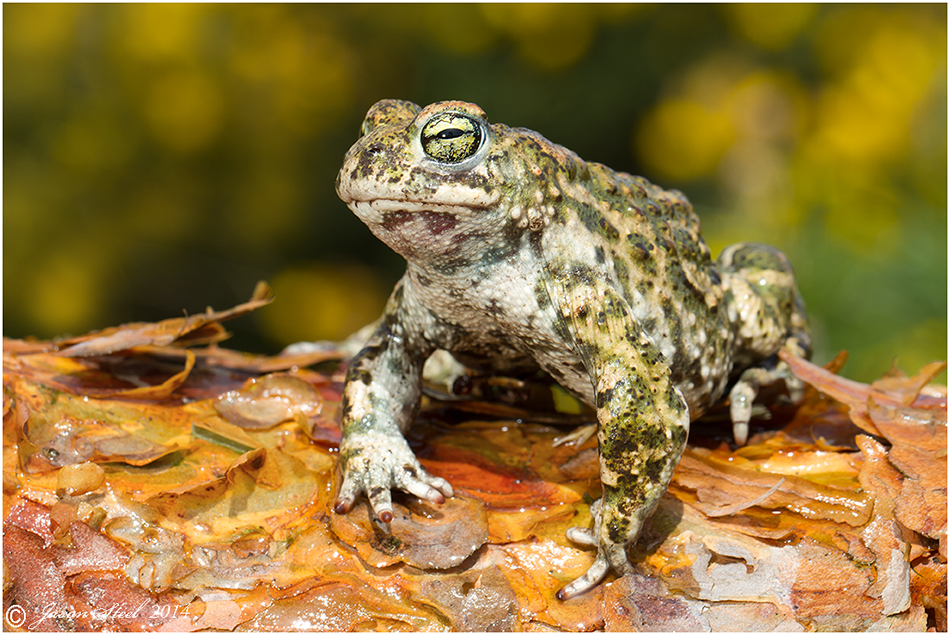
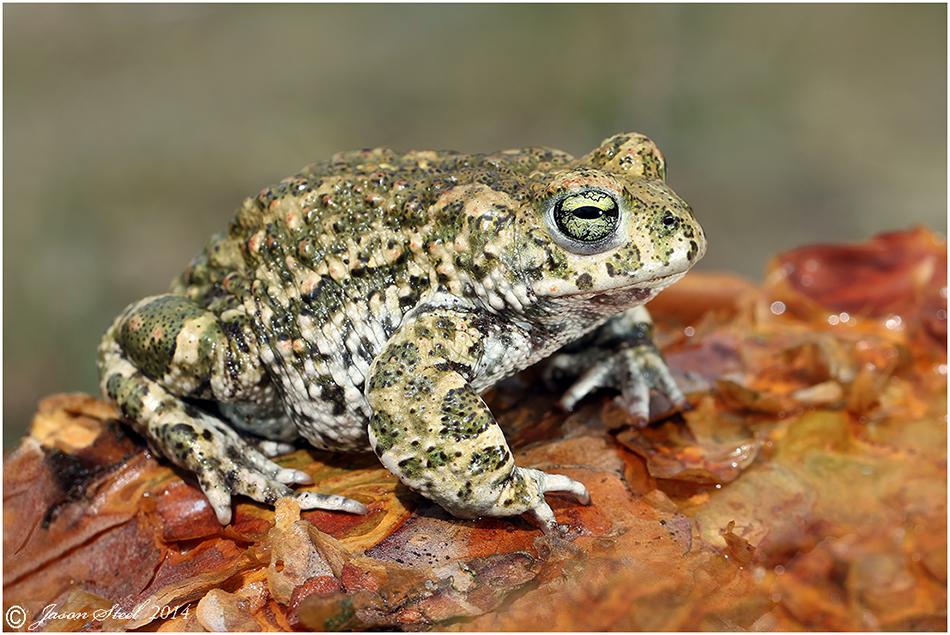
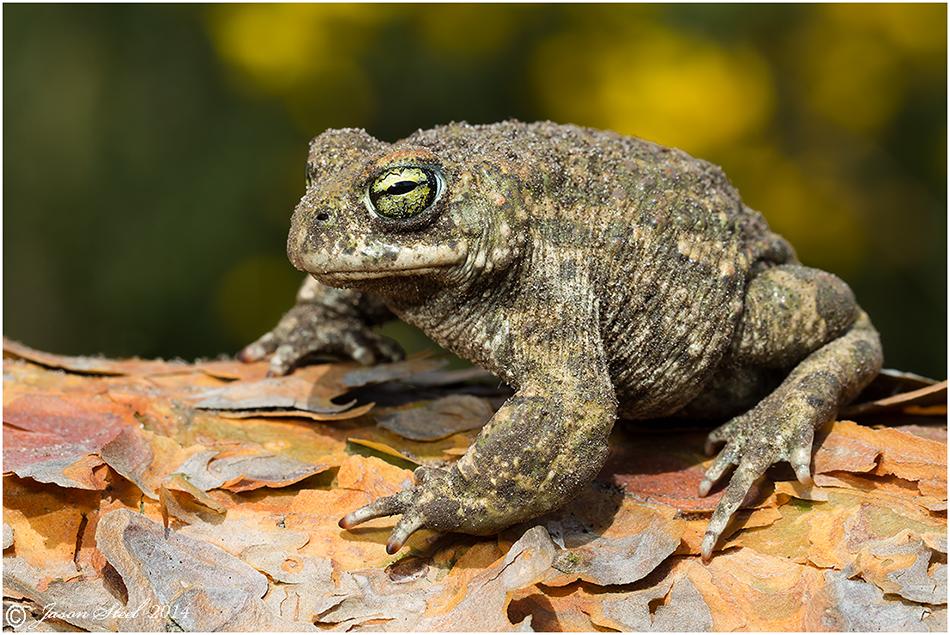
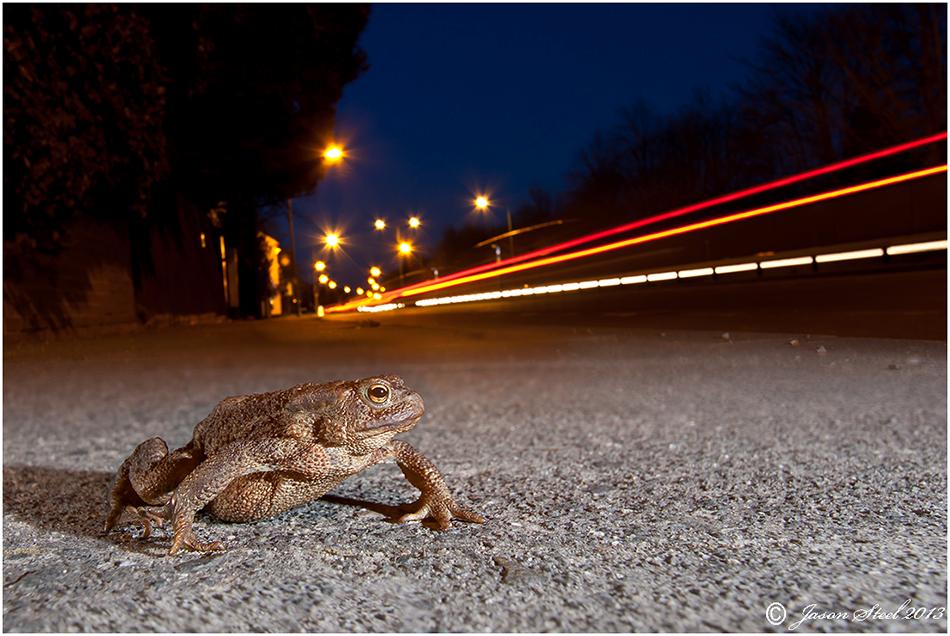
Toad Patrols
During the first two weeks of Spring Toads join in a mass migration to their breeding ponds to mate. This journey is often a long and perilous trip that claims the lives of many Toads as they attempt to cross busy roads. These deaths on Britain's roads are one of the biggest risks that Toads face these days. KRAG is one of many local wildlife and conservation groups that take an active role in trying to reduce these fatalities by organising evening Toad patrols during the 2-4 weeks of migration. Groups of volunteers meet at known highway hotspots for Toad migration and collect and rescue these Toads as they approach the busy roads. The Toads are collected up and given a helping hand by carrying them across the road and releasing them near to their spawning ponds. Of course it's not just toads that are collected. Other amphibians including frogs and newts also migrate at the same time and suffer the same fate, so these are collected too.
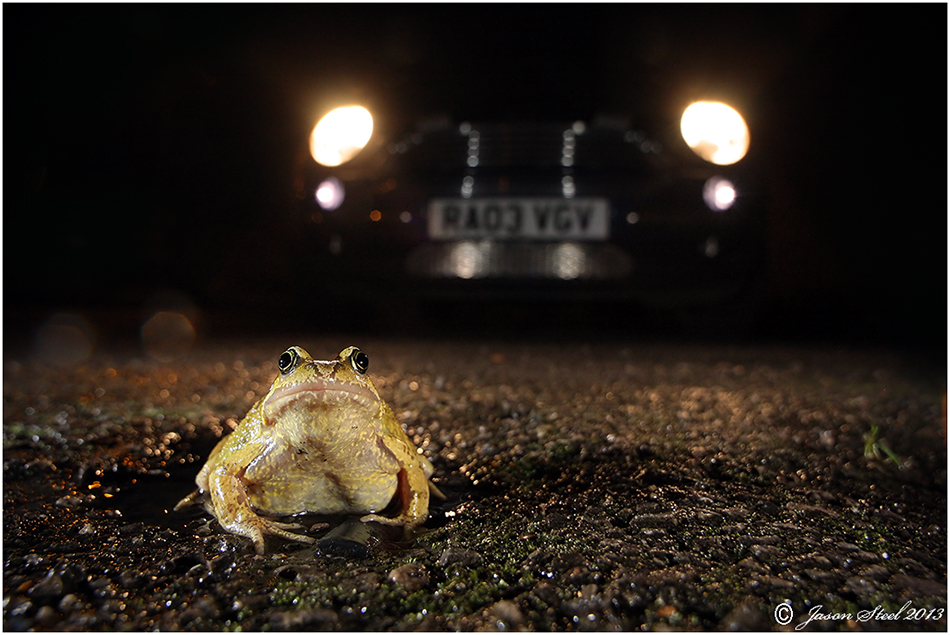
Volunteers are asked to give up whatever time they can. Whether it is half an hour a week during the breeding season or 2 hours a night, whenever the weather is suitable, all help is hugely beneficial to local amphibian populations. Volunteers armed with just a bucket, torch and a high-visibilty waistcoat can become actively involved in local conservation and make a real difference. Amphibian numbers have been declining across the UK over the past decade. Amphibians play a vital role in the control of garden pests such as slugs and other insects so without them your gardens would suffer.
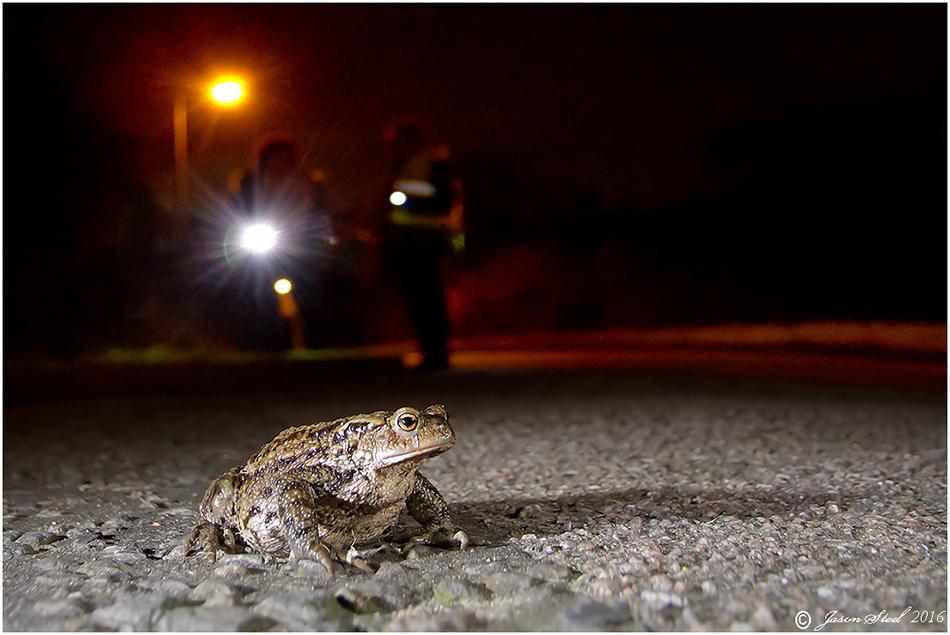
The amphibians usually stay at the ponds for a week or two whilst breeding takes place. After which the whole process is reversed. They now disperse and once again need our help to cross back over the busy road and head back to their feeding grounds. Toad patrols have become increasingly popular over the last few years and volunteers now save over 100,000 toads each year. That's a huge number and have a massive impact on the number of amphibians we have in the UK.
There are still many sites across the UK that are unmanned though or are short of helpers, and reports are sent in from members of the public each year reporting roads that have hundreds of squashed toads on them. Could you spare just a little time to help amphibians in your area?
To
find your nearest toad patrol and to get involved simply follow this
link and enter your
postcode:
Find Your Local Toad Patrol
Alternatively,
you can contact your local amphibian and reptile group
directly:
List Of Local ARG Groups
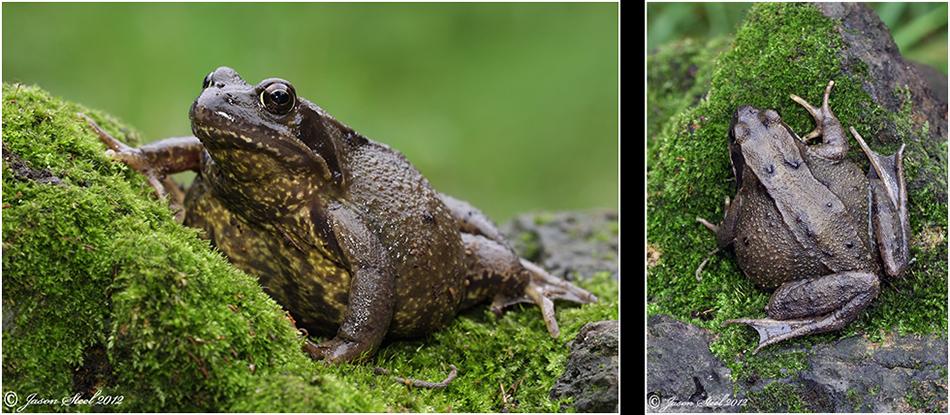
This female Common Frog was found in my garden in mid-October shortly before the weather turned really cold. It was the largest, fattest Common Frog that I have seen in the UK and will have a strong chance of surviving the winter hibernation having built up such good fat reserves. This large size is partly due to storage of winter fat but is also likely to mean that the female has already developed large numbers of eggs inside her body ready for spawning in the Spring.
All Photographs on this page were taken using:
Canon 7D & 40D cameras and the Canon 100mm f/2.8L IS Macro, Canon 15-85mm f/3.5-5.6 IS, Canon 10-22mm f/3.5-4.5 Wide-Angle and Sigma 14mm f/2.8 Wide-Angle lenses.